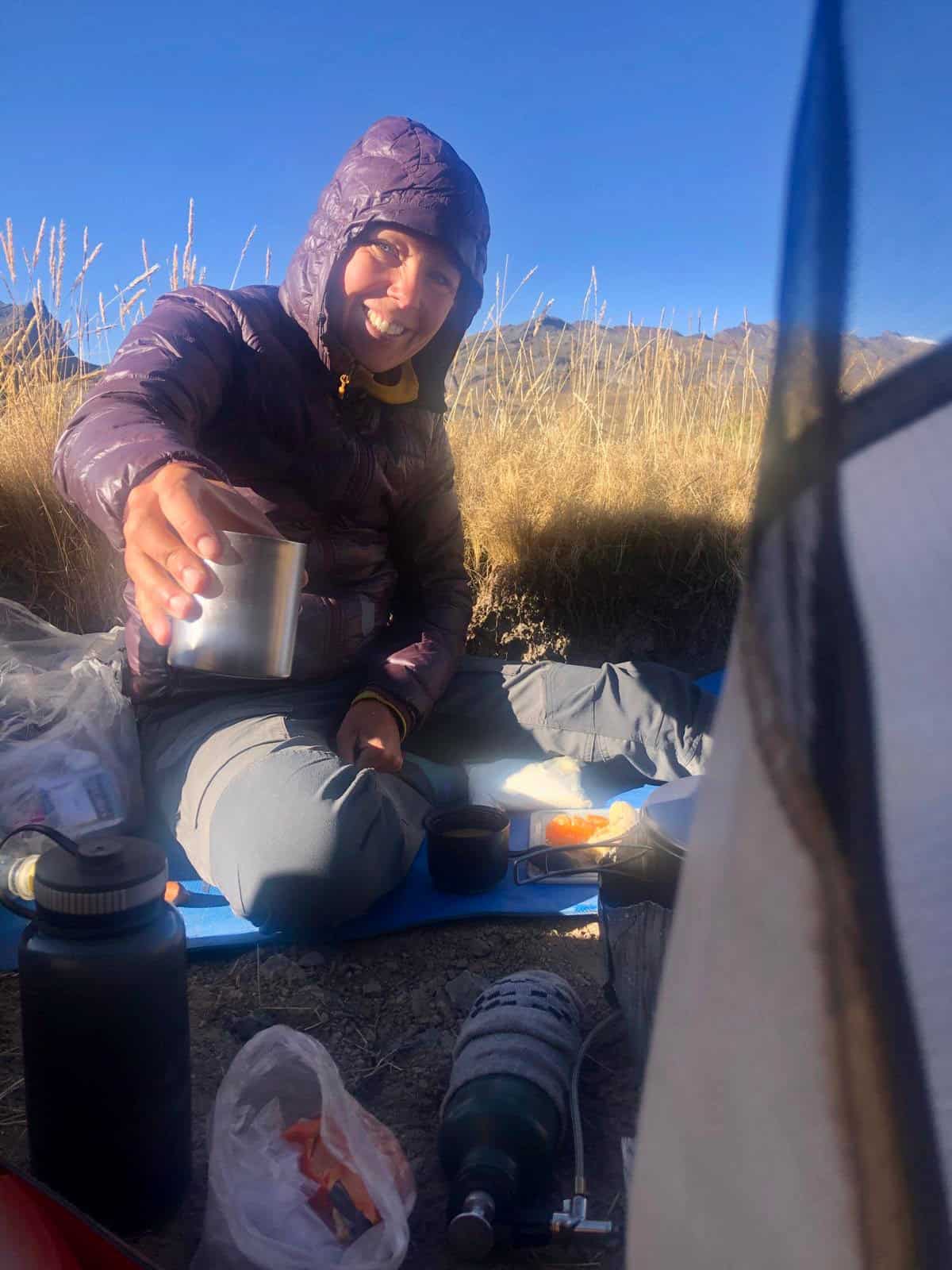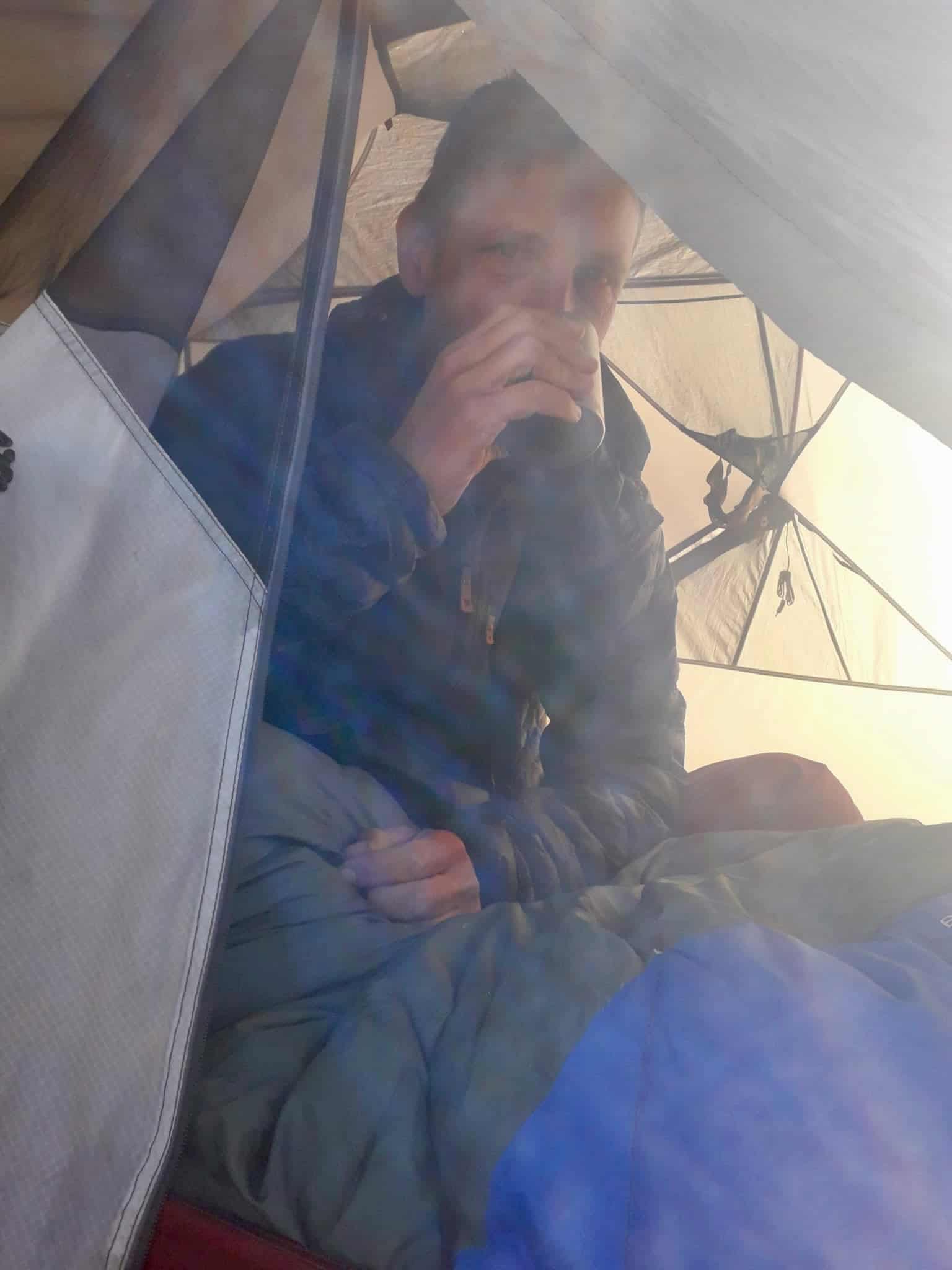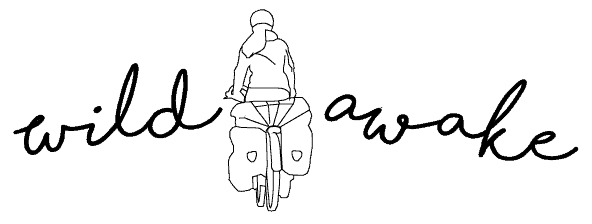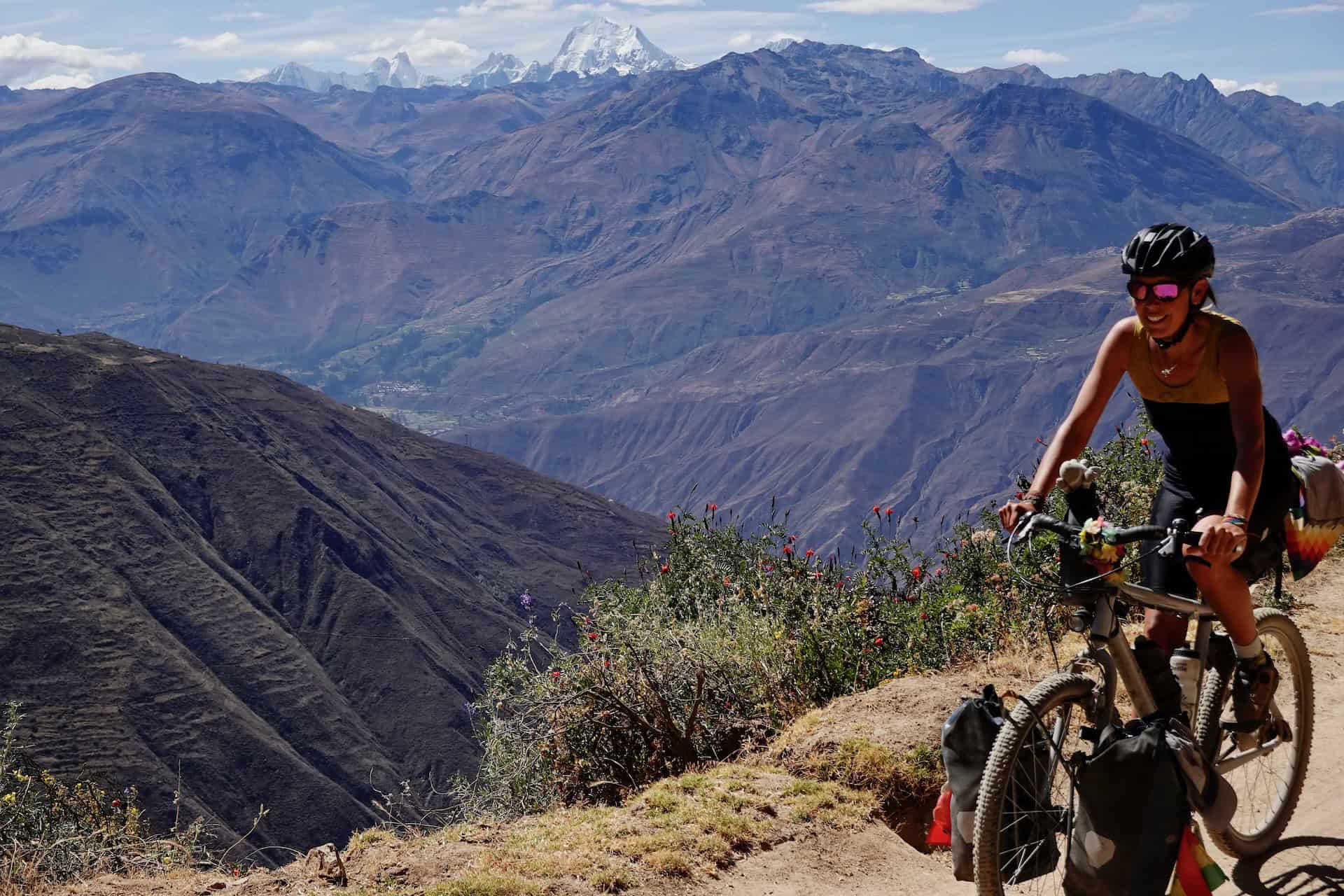
TurbobloOd
Well-rested, we exchange our ‘suite’ in the Gran Pumpush for the fresh air again. Fortunately, we can leave the ‘highway from hell’ connecting the various mining towns behind us and continue our route on a quiet gravel road along a large lake. We ride out of the town onto the pampas. Pampas? Yes, I can’t call it anything else. Vast, flat, somewhat dry fields. The mountains seem to have disappeared. The lake also looks strange in this place, with pink flamingos and cows that think they are water buffalos. We camp on the pampas, the only option. The field is littered with tiny skewers. To protect our sleeping mats, we fill the space that remains around the protective blue ‘yoga mats’ with clothing. When we turn the yoga mats over the next morning, the bottom is full of about a thousand skewers. It’s a miracle that our sleeping mats aren’t leaking. Paul calls the price for these yoga mats our ‘best spent €8 of the trip’. I agree!
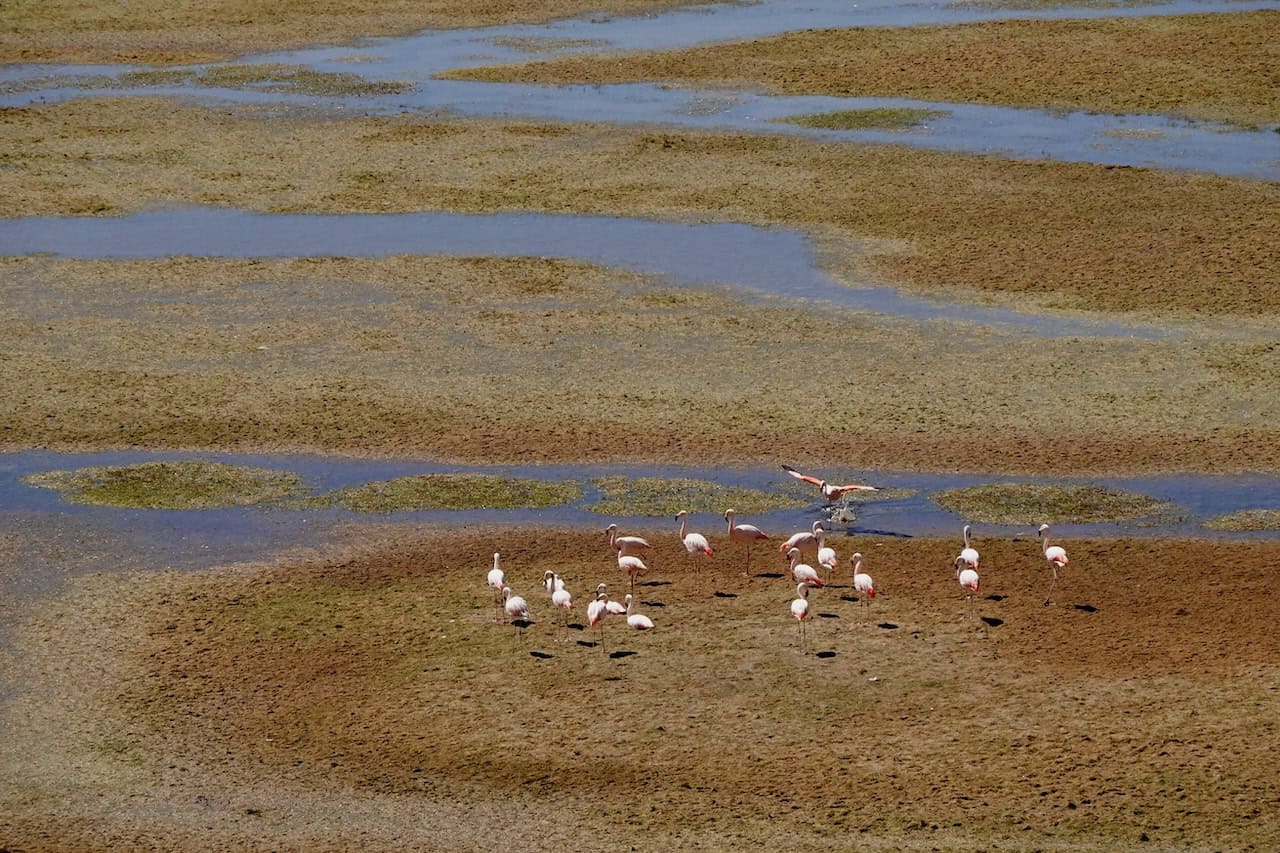
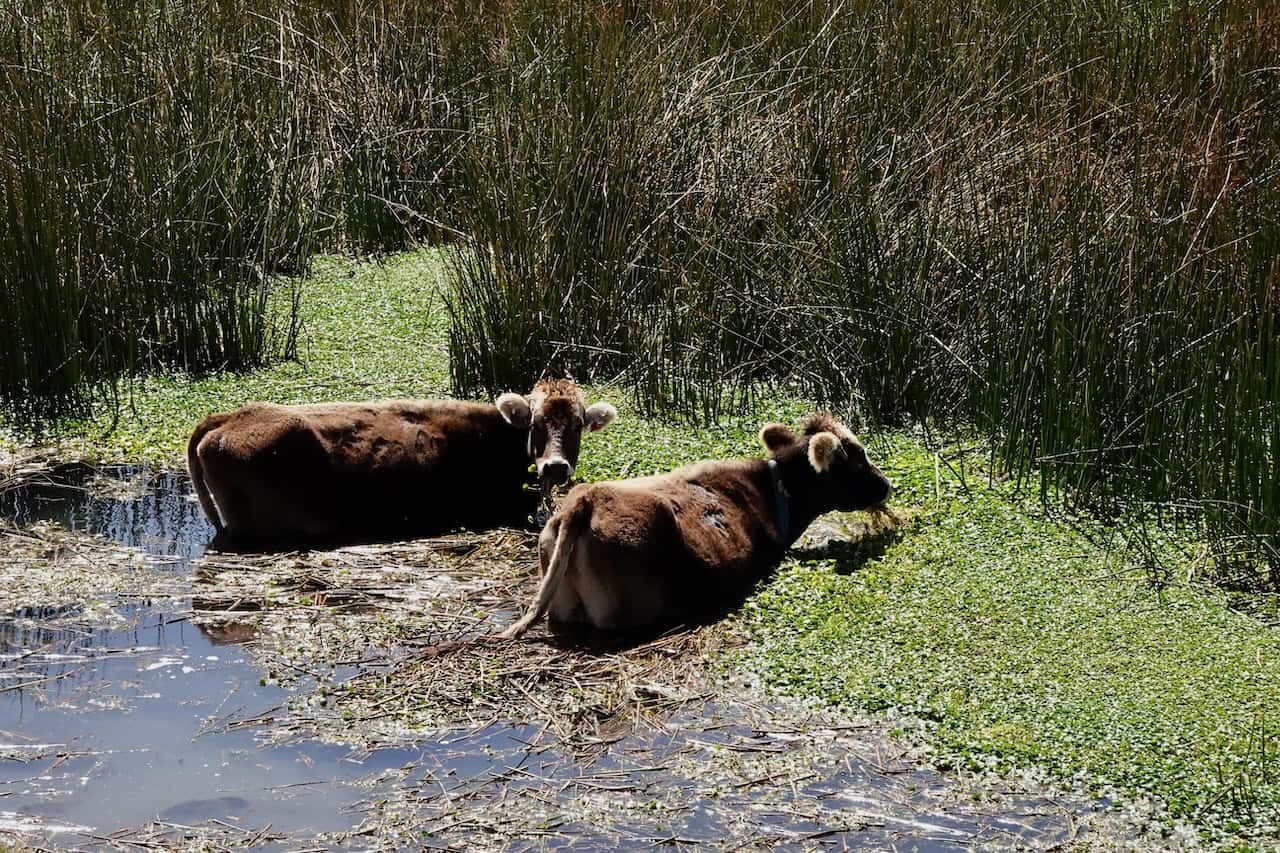
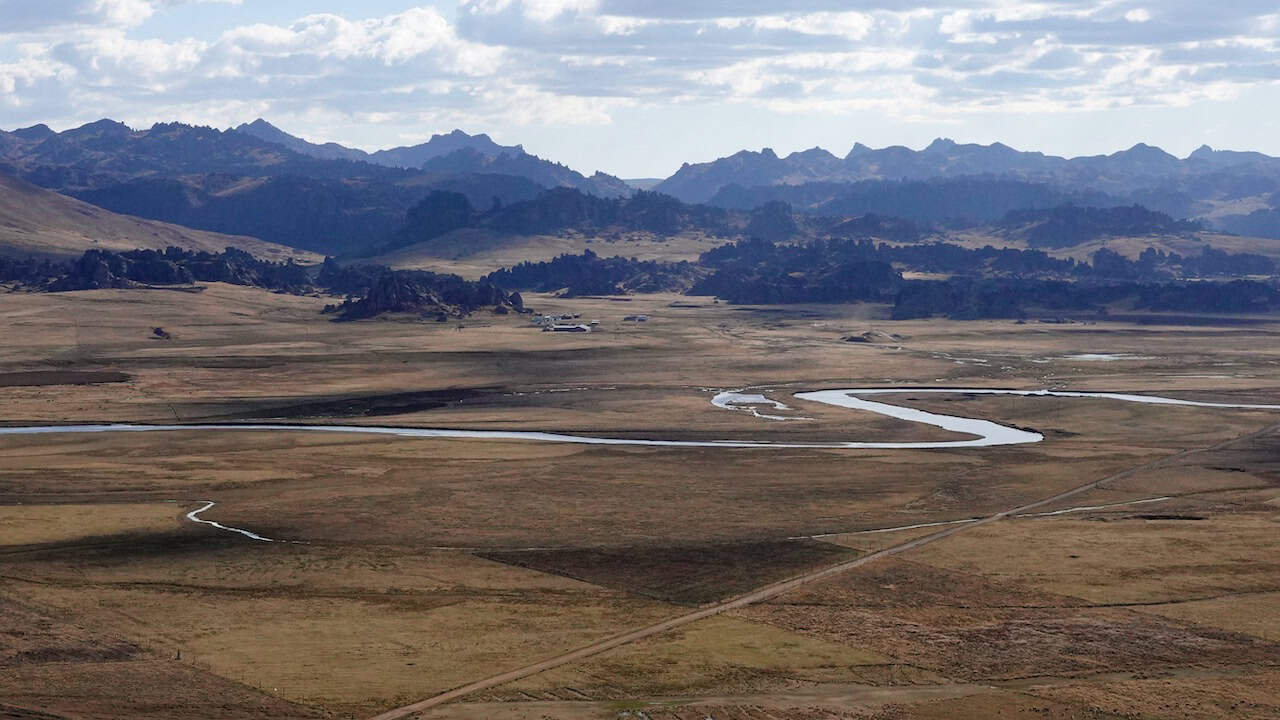
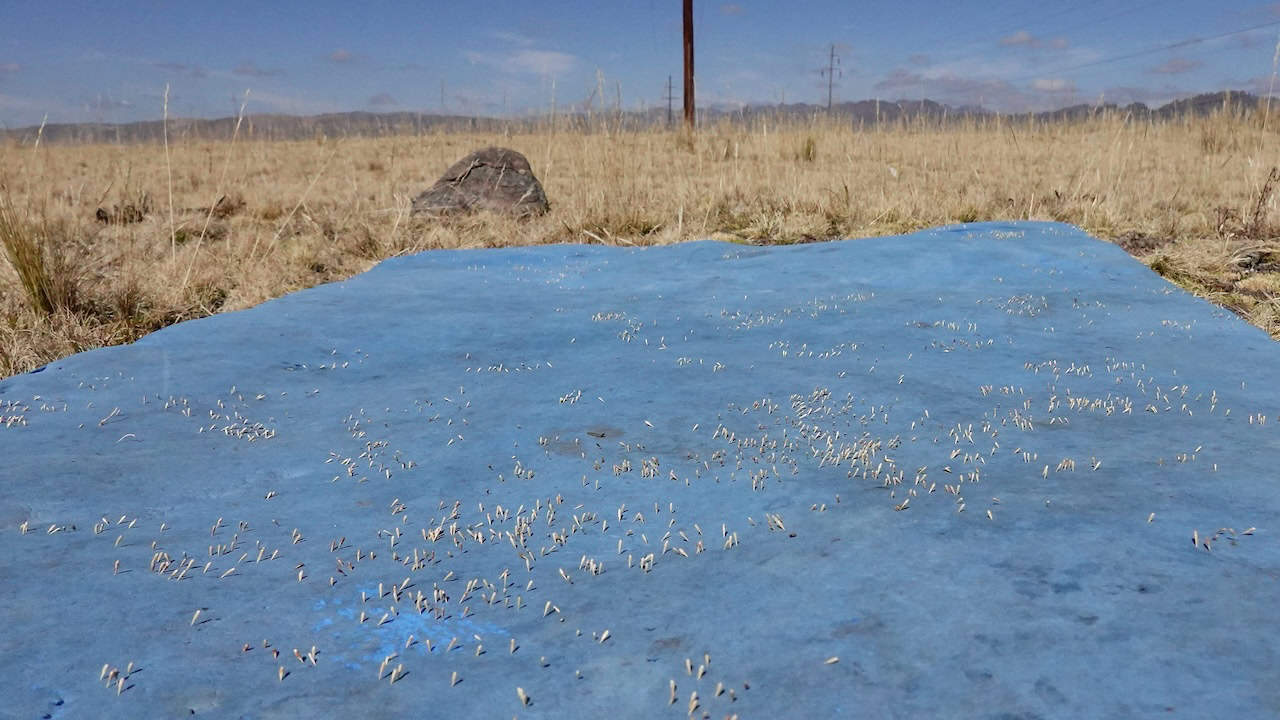
The next day the pampas starts to undulate and we suddenly see the mountain tops rising up in front of us again. It is a beautiful sight: the green/yellow grass and then that rugged mountain range in the distance. What we see a lot here are the remains of pools. I expect the water to collect there in the rainy season. In the dry season most of them are dry and leave round shapes in the landscape of about half a meter deep. The ground is flat and bare and thus offers a suitable place for the tent. Tonight we camp in such a pool before we start the climb of the Jatunchacua pass. From our camping spot we can see several glaciers. Even at night the surroundings are beautiful, with the sky full of stars illuminating the glaciers and the mountains coloured black against the dark blue sky.
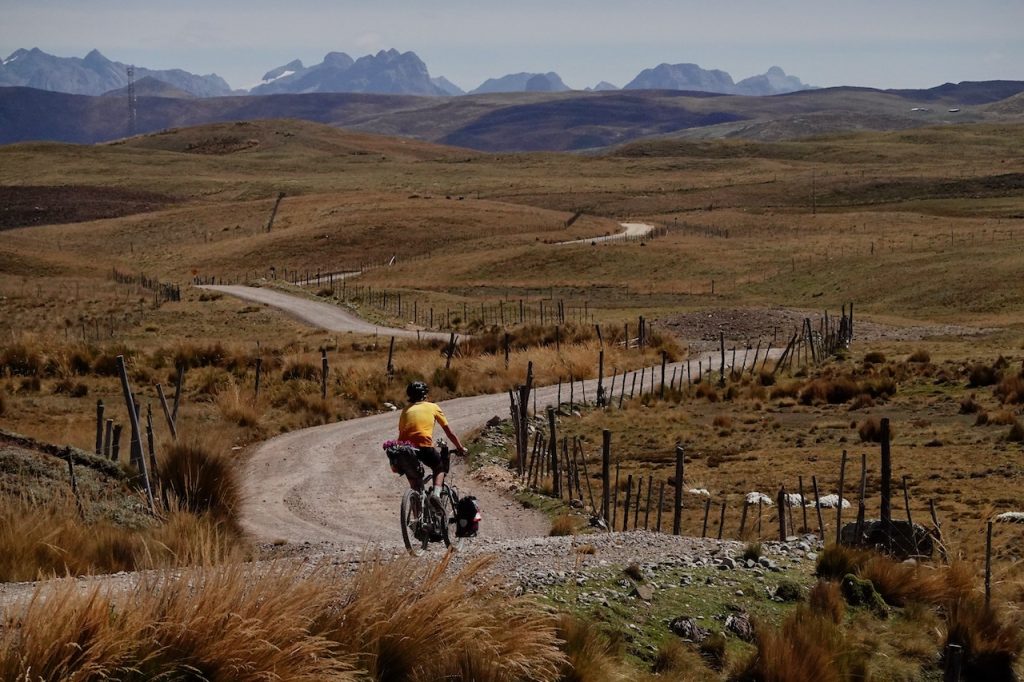
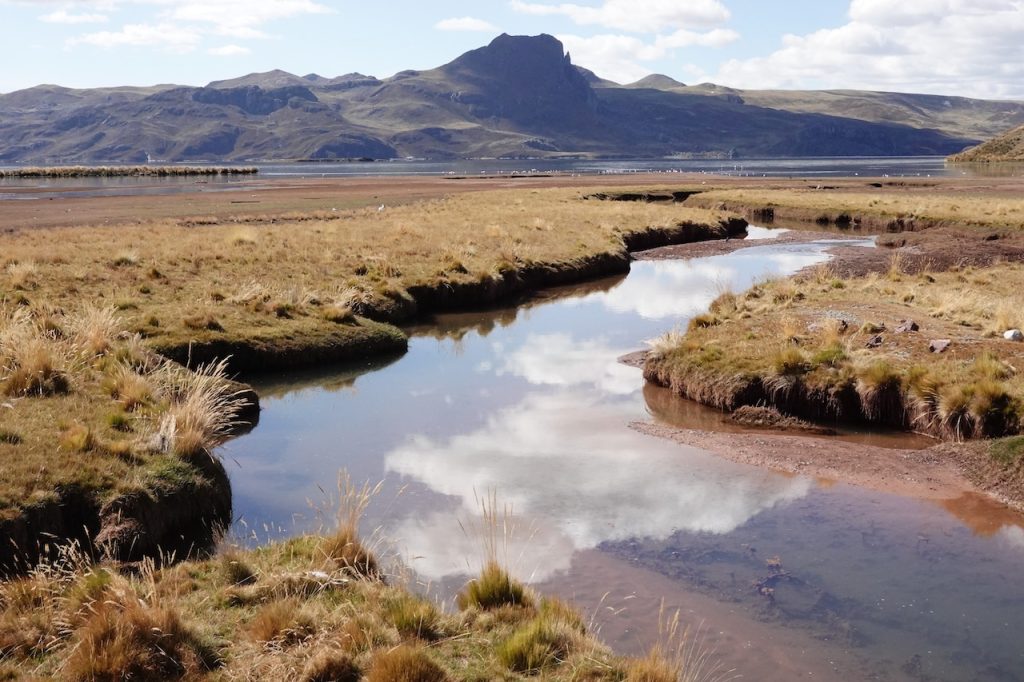

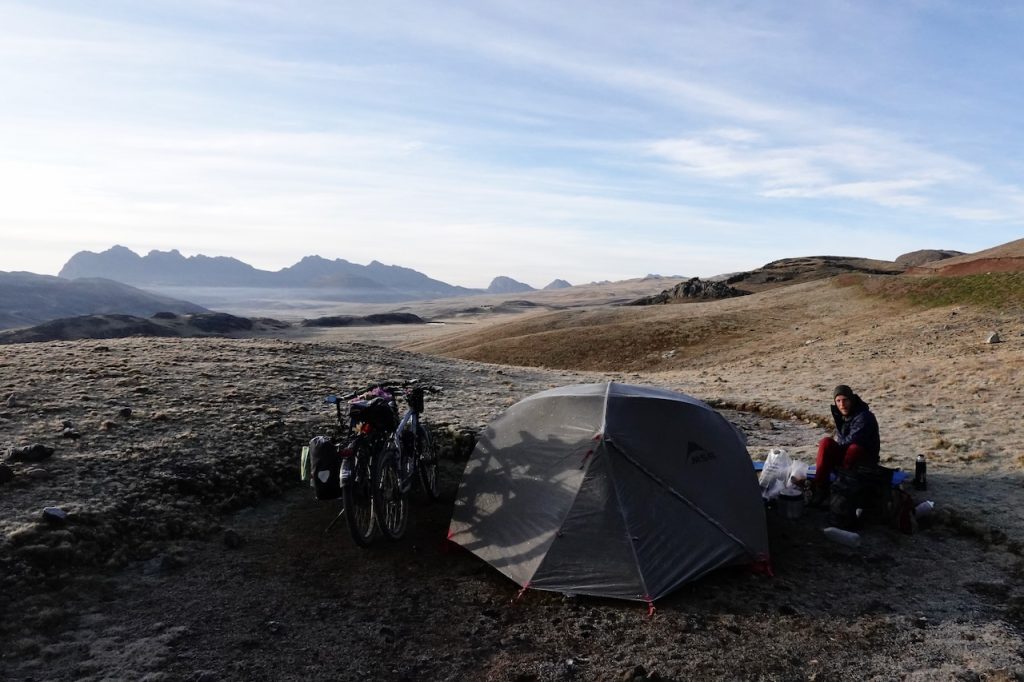
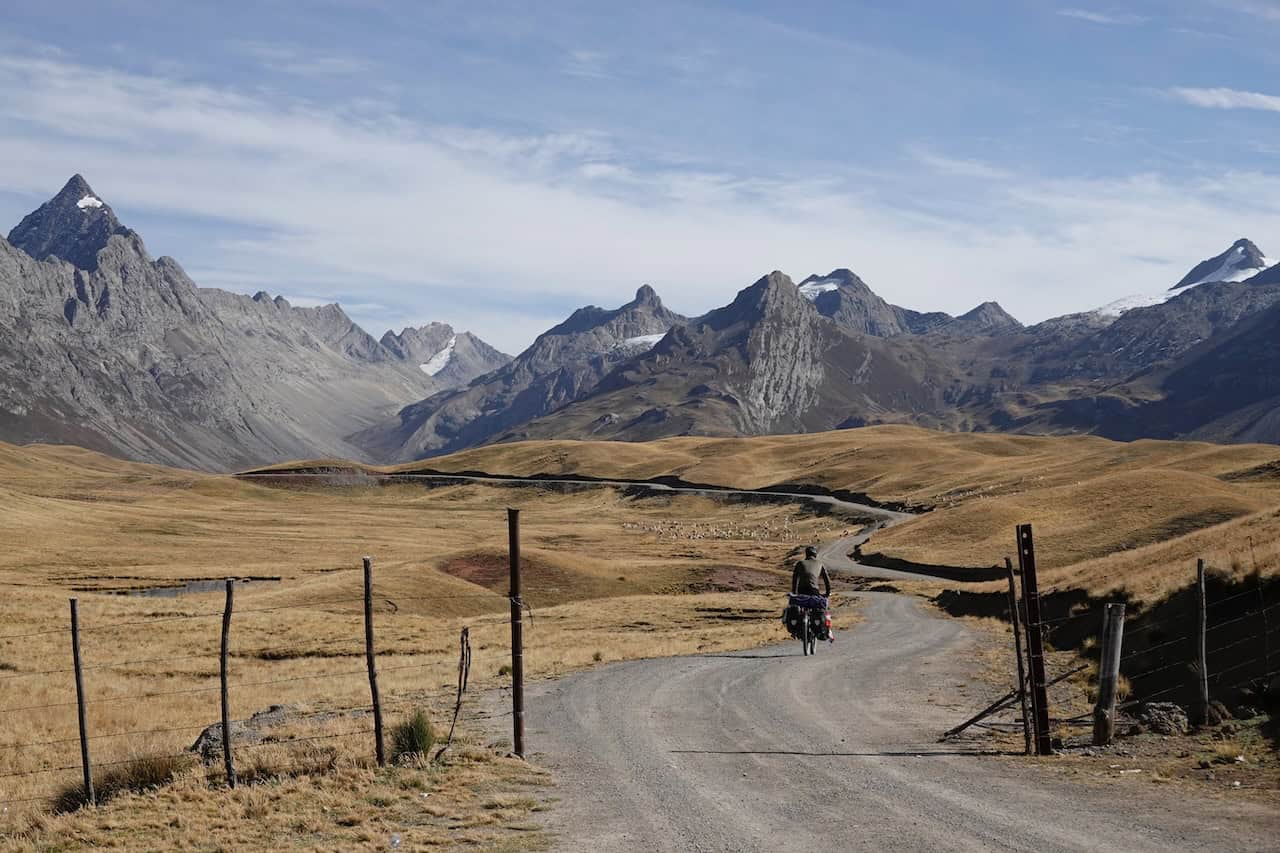
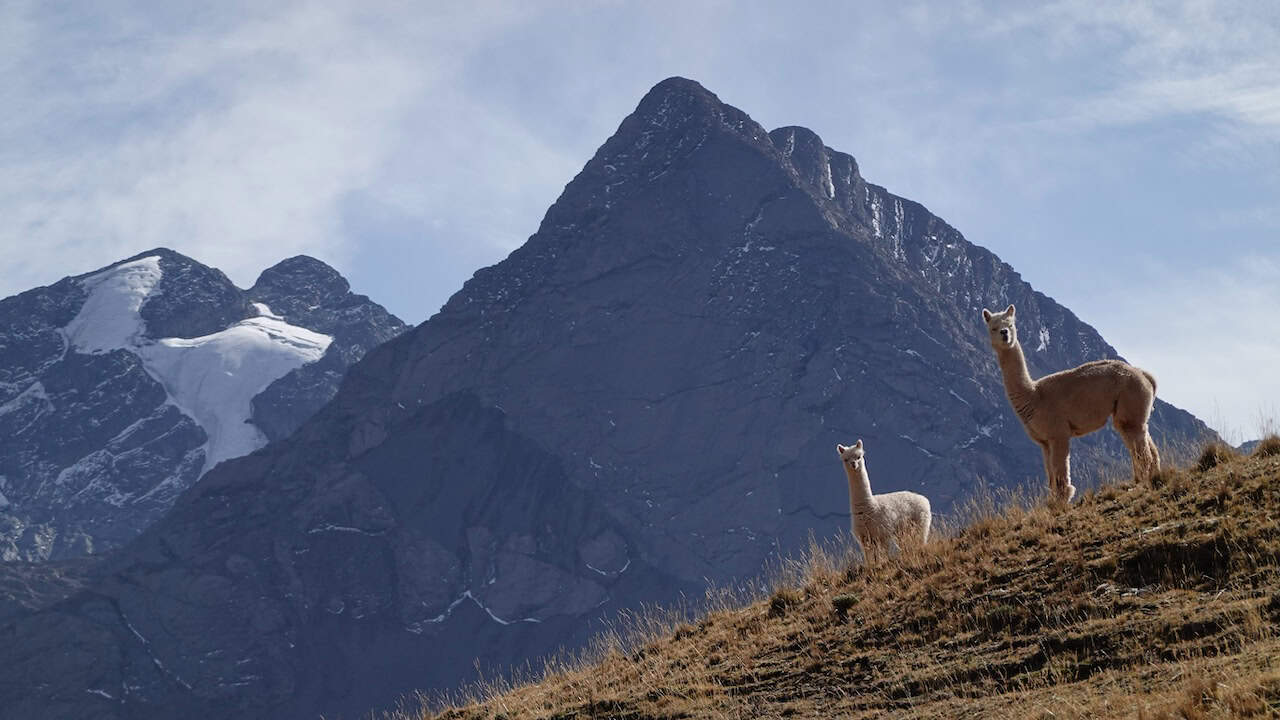
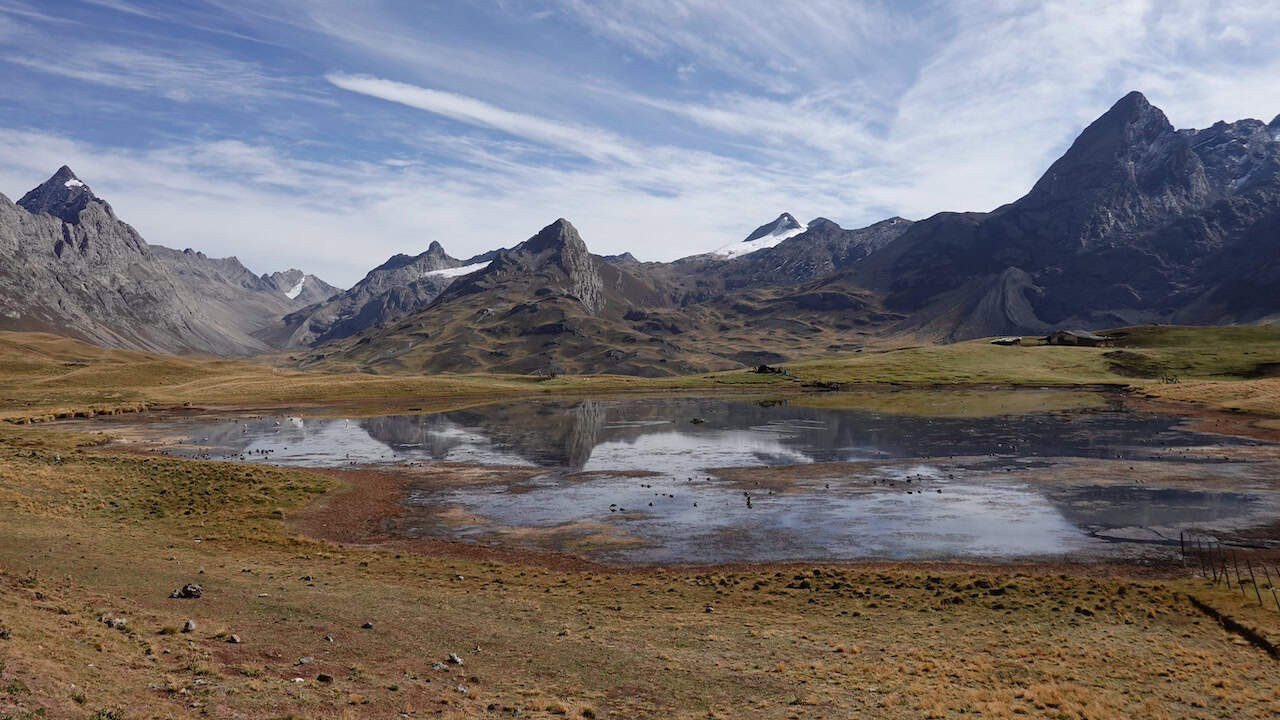
The next day it is only a short distance to the pass, or the ‘Abra’ as they call it here, actually the ‘opening’ in the mountain. The climb up was relatively ‘easy’, as far as you can say that about the road to a 4825m high pass. The road down… not so easy. It must be a very big coincidence that a car bumps over the pass just after us, because the kilometres that follow are steep, rocky and seem almost untouched by four-wheelers in a very long time. As we bump further down, things do not get any better. The surrounding mountains seem fragile because we see the remains of several rock avalanches. With the sharp boulders that come down in the process, the ‘road’ here is partly constructed. A few times we have to get off to guide our bikes over the boulders while walking.
Fortunately, the view is breathtaking and we can stop every now and then to enjoy it. Paul and I agree wholeheartedly that we are lucky to be taking this road downhill. What a hell of a job it must be to drag your bike up here. We pause at a spot when the hardest part seems to be behind us. While we are drinking tea, I suddenly see two cyclists approaching, uphill. One of them is walking, the other is struggling, wobbly in the saddle. We don’t know whether to giggle or feel sorry for them. They turn out to be Argentinians on heavily loaded bikes. We have a chat with them and make no bones about the fact that they are facing a hellish climb. We wish them luck and watch them as they continue, walking and wobbly on their bikes… ouch… this is the part that is ‘not too bad’. As we descend further, we also come across a Dutch couple, on Santossen. A similar talk follows, Paul gives some more tips about the set-up of the bikes and they tip us a ‘hotel that feels like home’ in the village (where they have ‘everything’) where we are riding to today. A pleasant prospect.. for us that is..
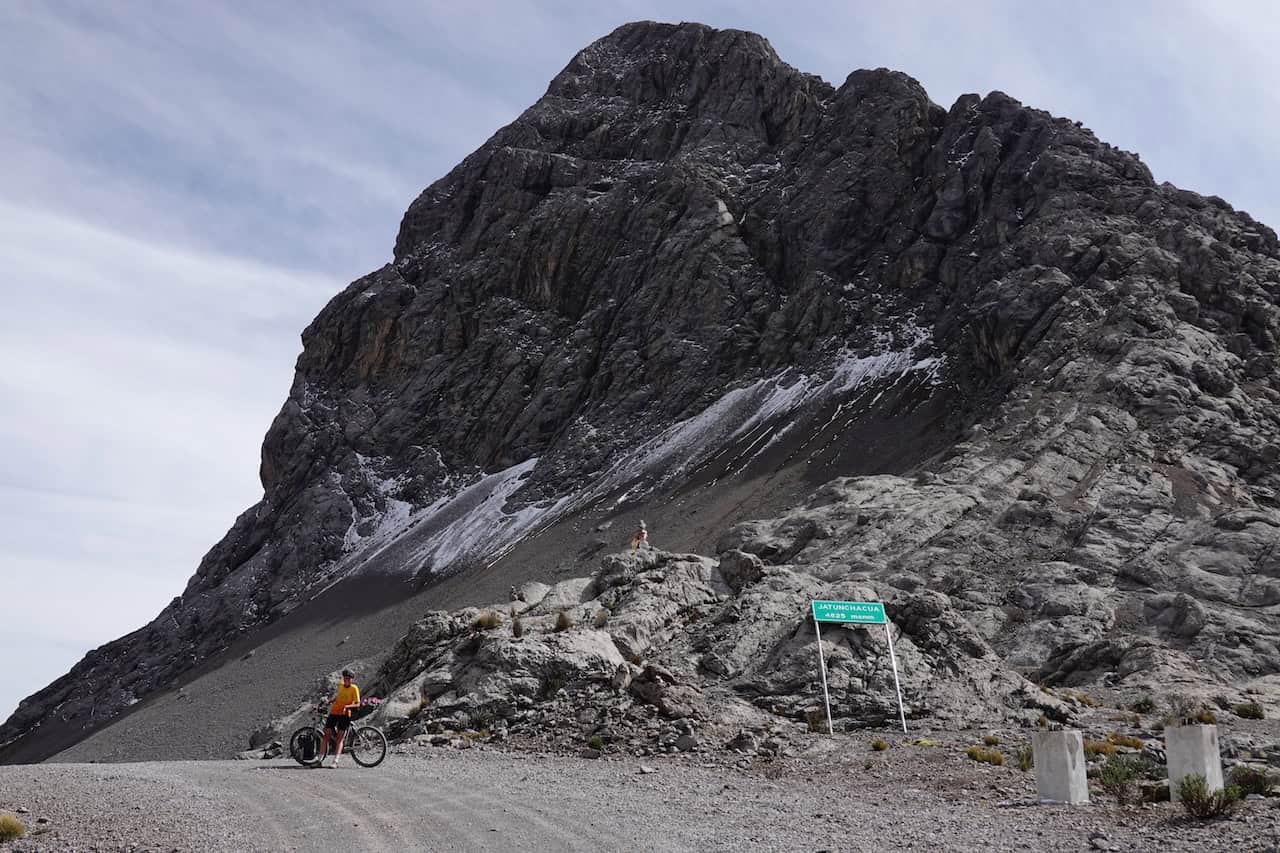
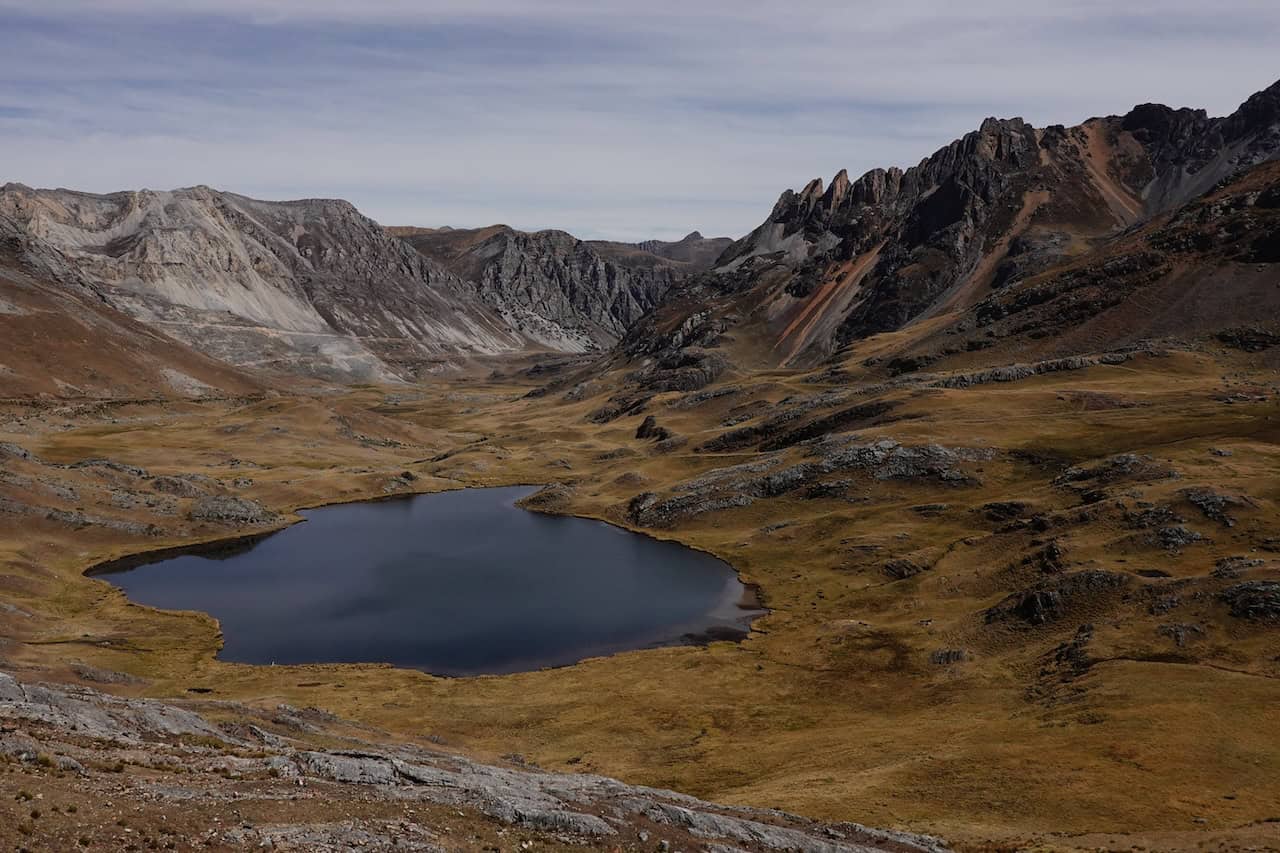

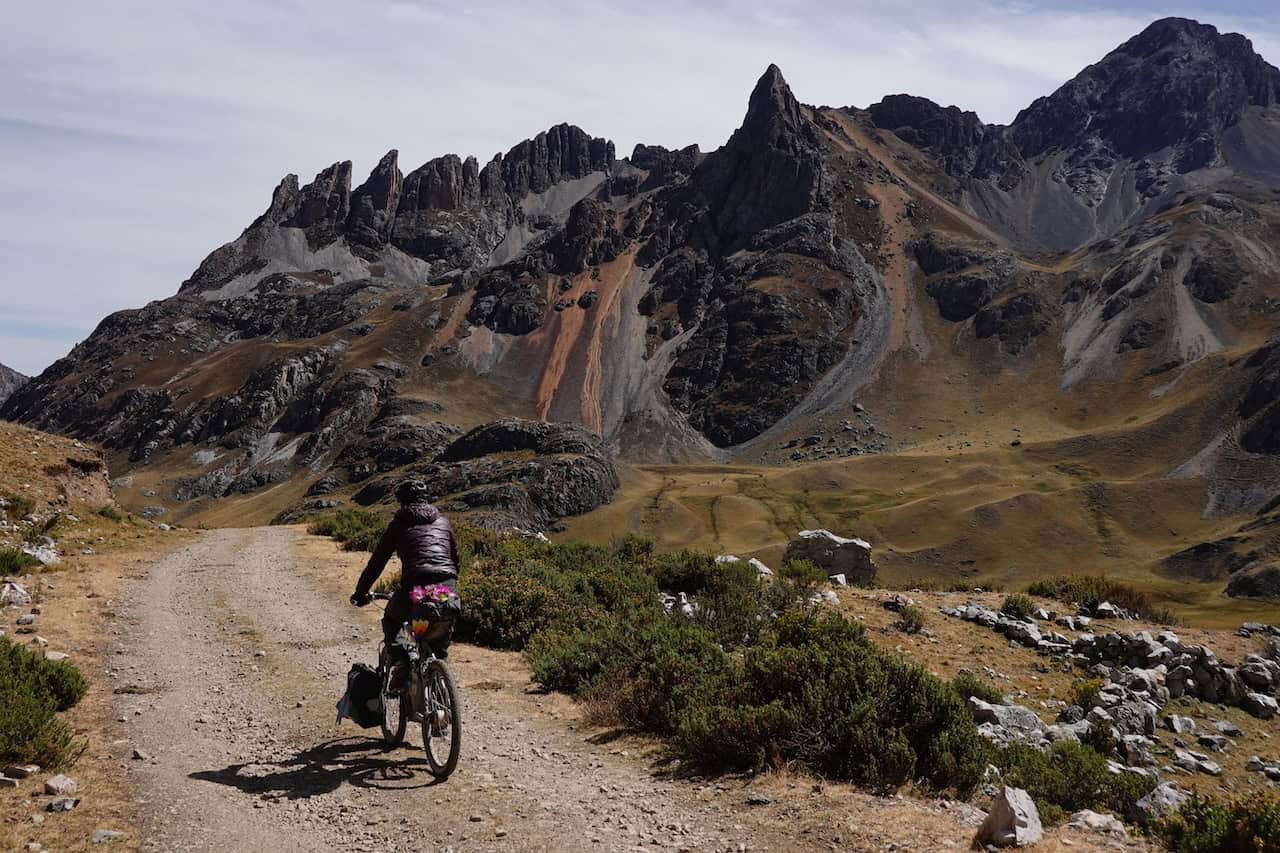
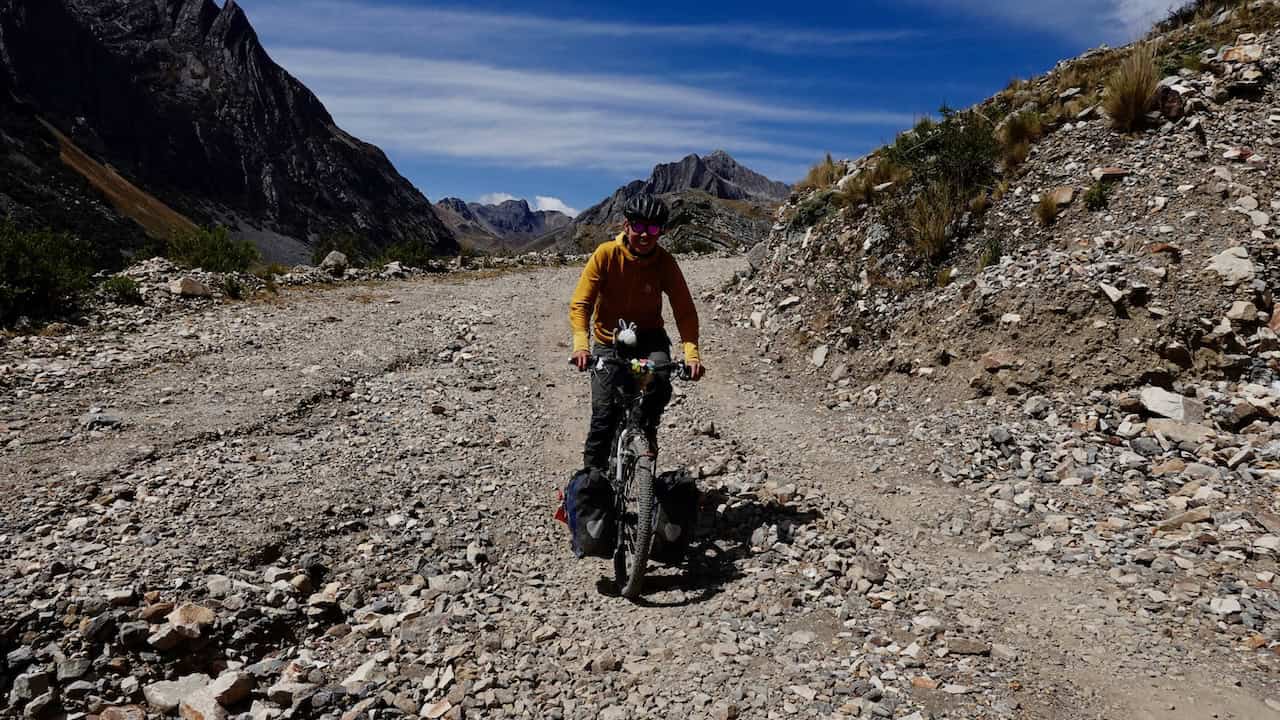

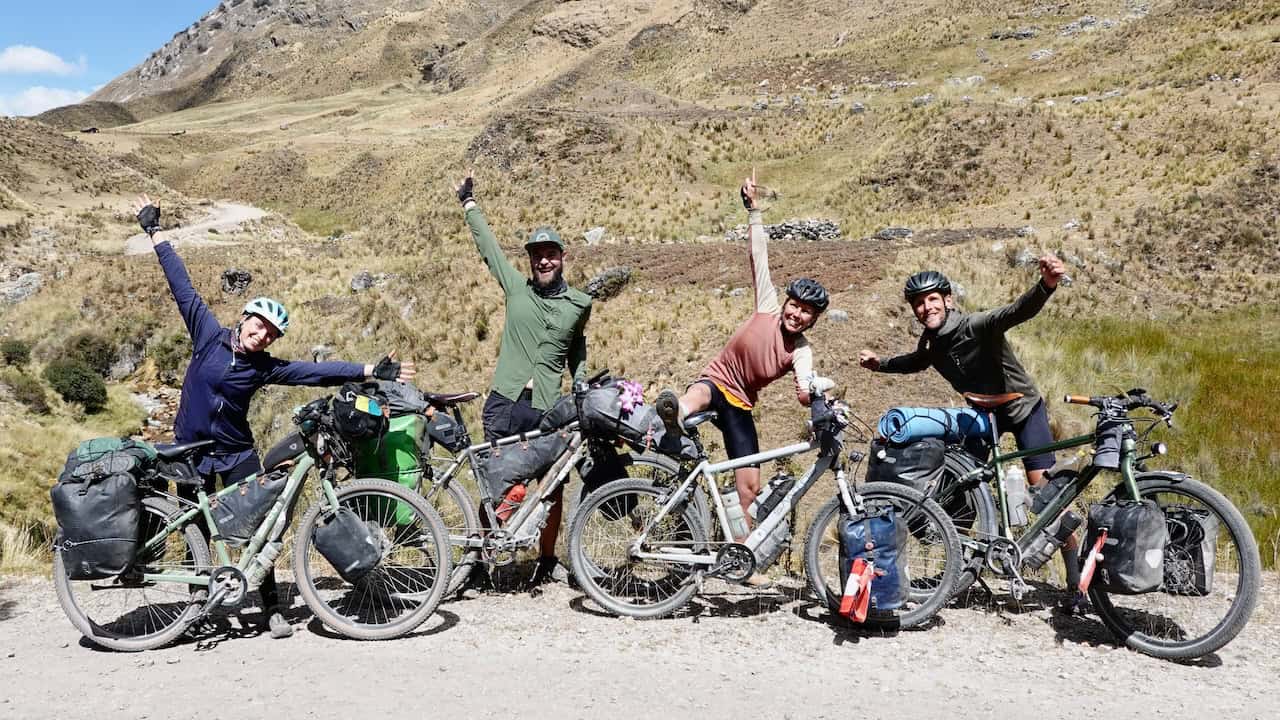
That village, Oyon, is a bit disappointing, to say the least. It is Sunday and all the men seem to have gathered around the football field where the ‘Blue Star’ hotel is located. They all have large bottles of beer in their hands and have apparently already consumed the contents of many more. We quickly check in at the ‘hotel that feels like home’. Our room has a small window that looks out into a dark, narrow air shaft. The mattress is covered in a plastic cover, as I would expect in a nursing home, and every two minutes the minute-long tune of the automatic doorbell at the entrance goes off. Absolutely nothing in this place feels like home, to us.. We decide to postpone our restday to a more pleasant place.
After Oyon, another long climb begins, but this time on a small asphalt road. Not much wider than a two-way cycle path and fortunately with very little traffic. We meet a man on a horse with two dogs. He asks us questions about our journey with interest. He himself is on his way to his cows, which are scattered throughout the area, to count them… There are a few hundred of them. But before he chooses another steep route through the vegetation, he rides to the next bend in the road. There he has reception with his smartphone. When we meet him there (he is faster than us), Paul asks if he can take a picture of him. He is allowed to, and he also likes it when we send it to him, via Whatsapp. What a special mix of simplicity and tradition and modern technology you can find here in the Peruvian mountains. A little later, just before the pass, Paul and I stop for a ‘high tea’; a cup of tea above 4000 meters with a dry factory made muffin. In the distance we see the modern cowboy on his horse among the cows. We wave to each other.

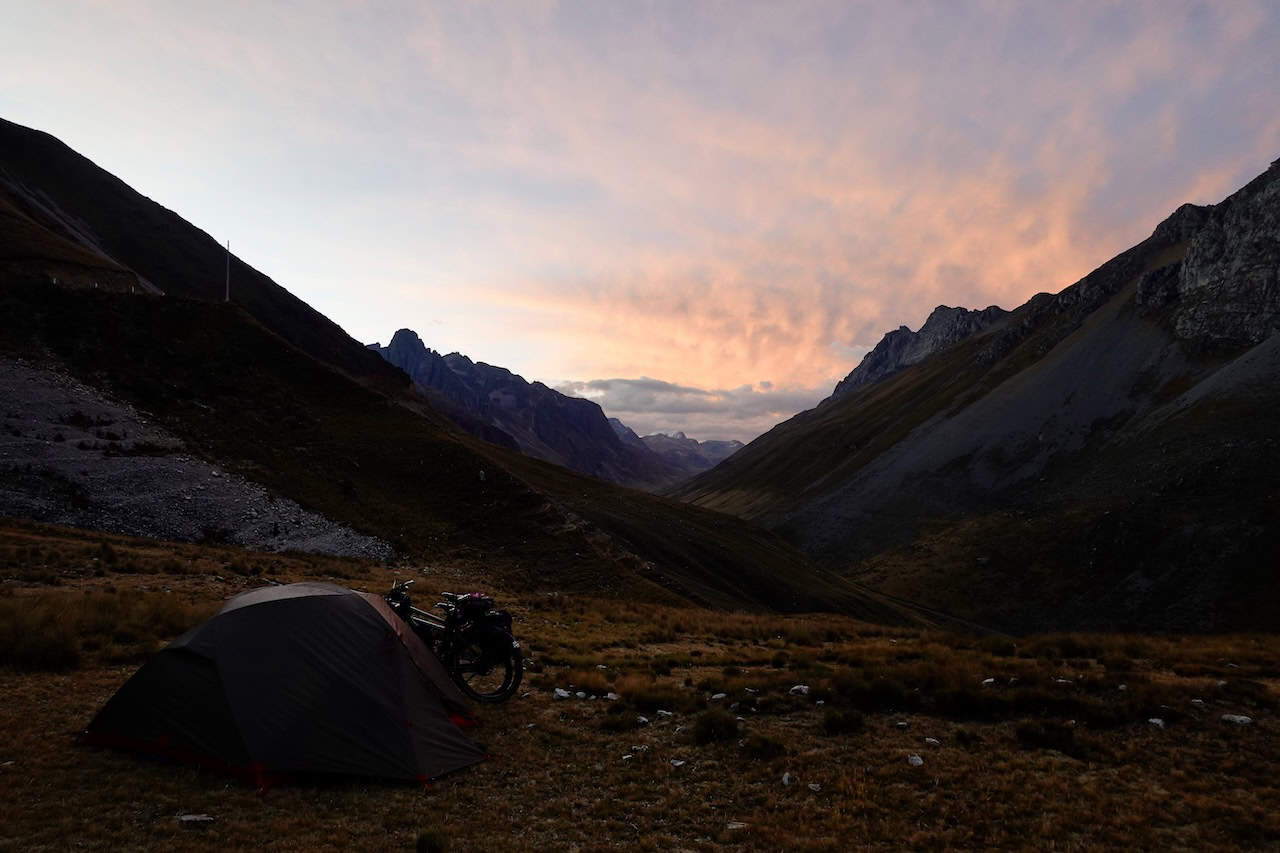

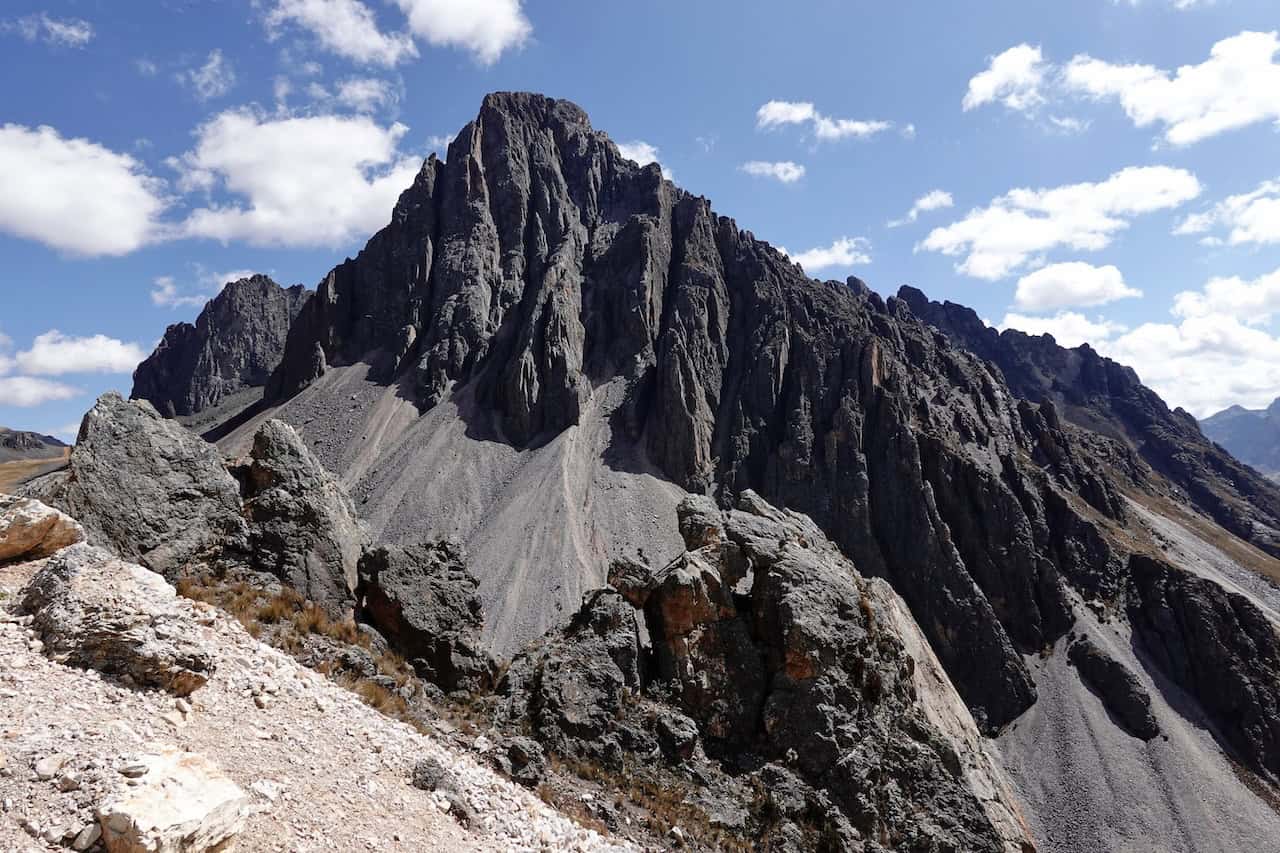
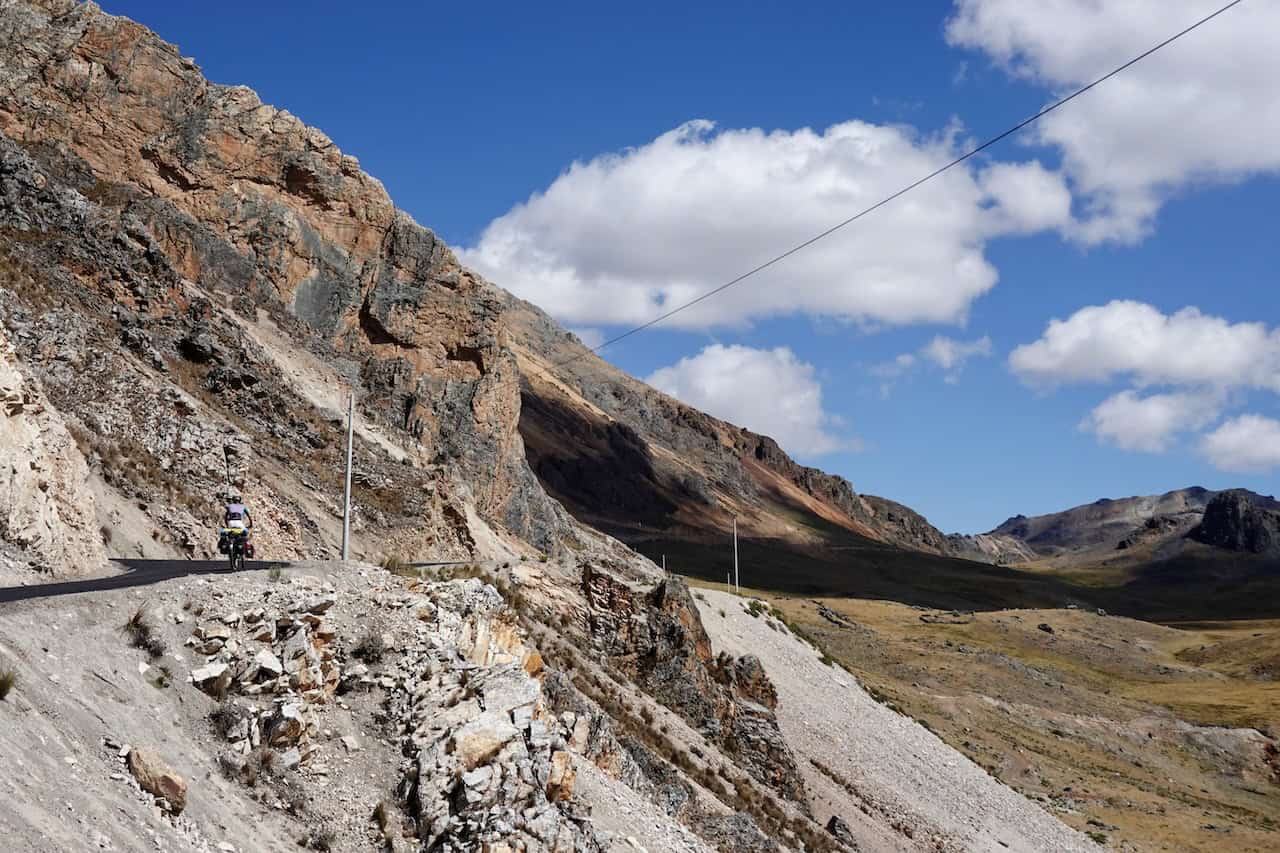
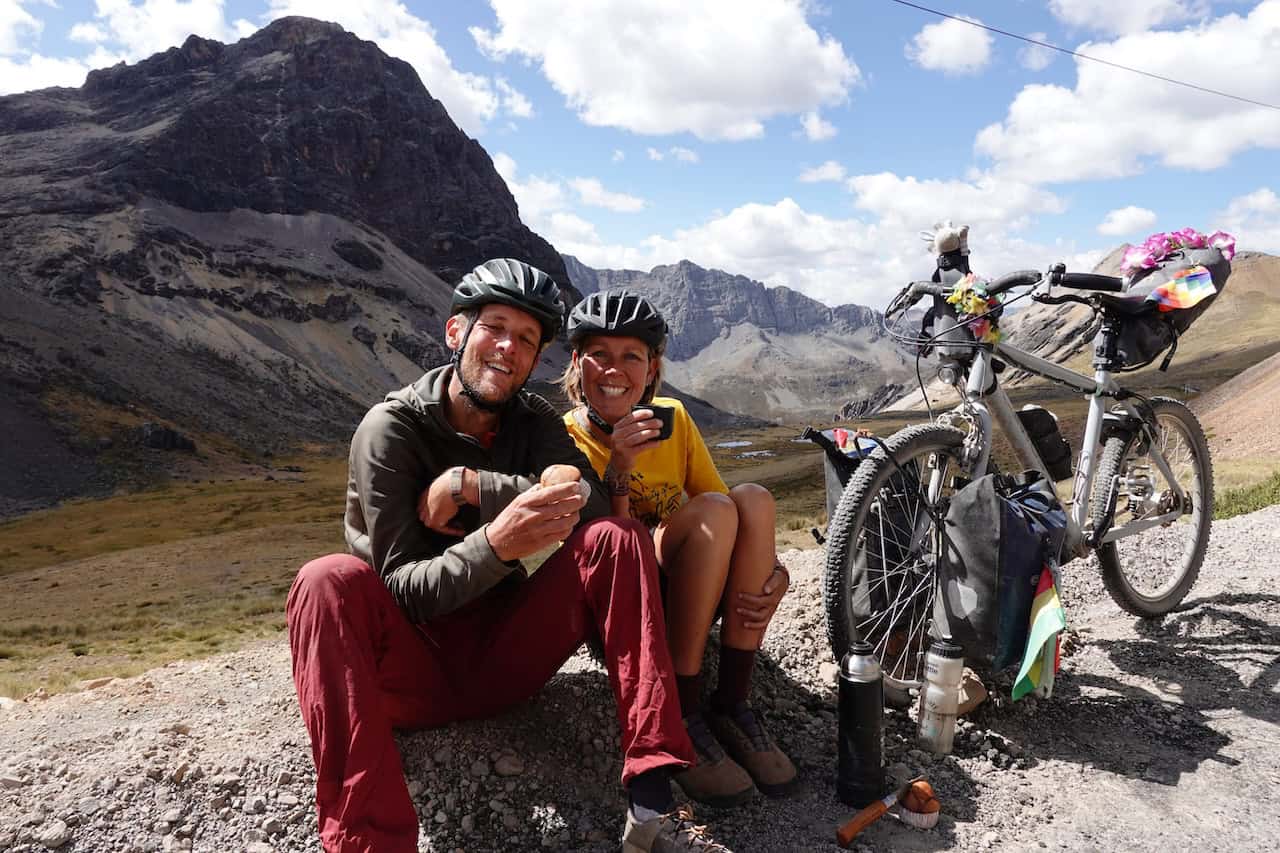
Once at the top, a completely new view is revealed to us. Relieved, I let my bike roll at full speed. Lovely, that smooth asphalt! I do see a pick-up truck with workers and a sign and a slightly too dark asphalt, but I think… if I just roll fast enough, a bit of fresh asphalt won’t bother me. But, alas… from behind me I hear a woman scream ‘Nooooo señora, es FRESCOOO!!!’. Caught… I obediently get off my bike. The asphalt still has to dry, says the woman, we can’t go over it until half past three. ‘Yes hello!’ I think, ‘that’s not until four o’clock’! With a bit of persuasion we are allowed to go through, as long as we walk next to the road. Unnecessary, because the new asphalt is more than dry enough for the weight of our bikes. We have to avoid the next section, which is still being worked on, by taking an unpaved road. Then the time has finally come and we can roll at full speed. 3500 meters of descent over almost 100km!!! On asphalt!!! I have never done such a long descent. What a reward for all the climbing in the past few weeks. Still, a descent of 1000 meters would have been enough… because we know all too well: ‘What comes down…. Must go up!’. This time with 4000 meters of climbing over 100km, unpaved!

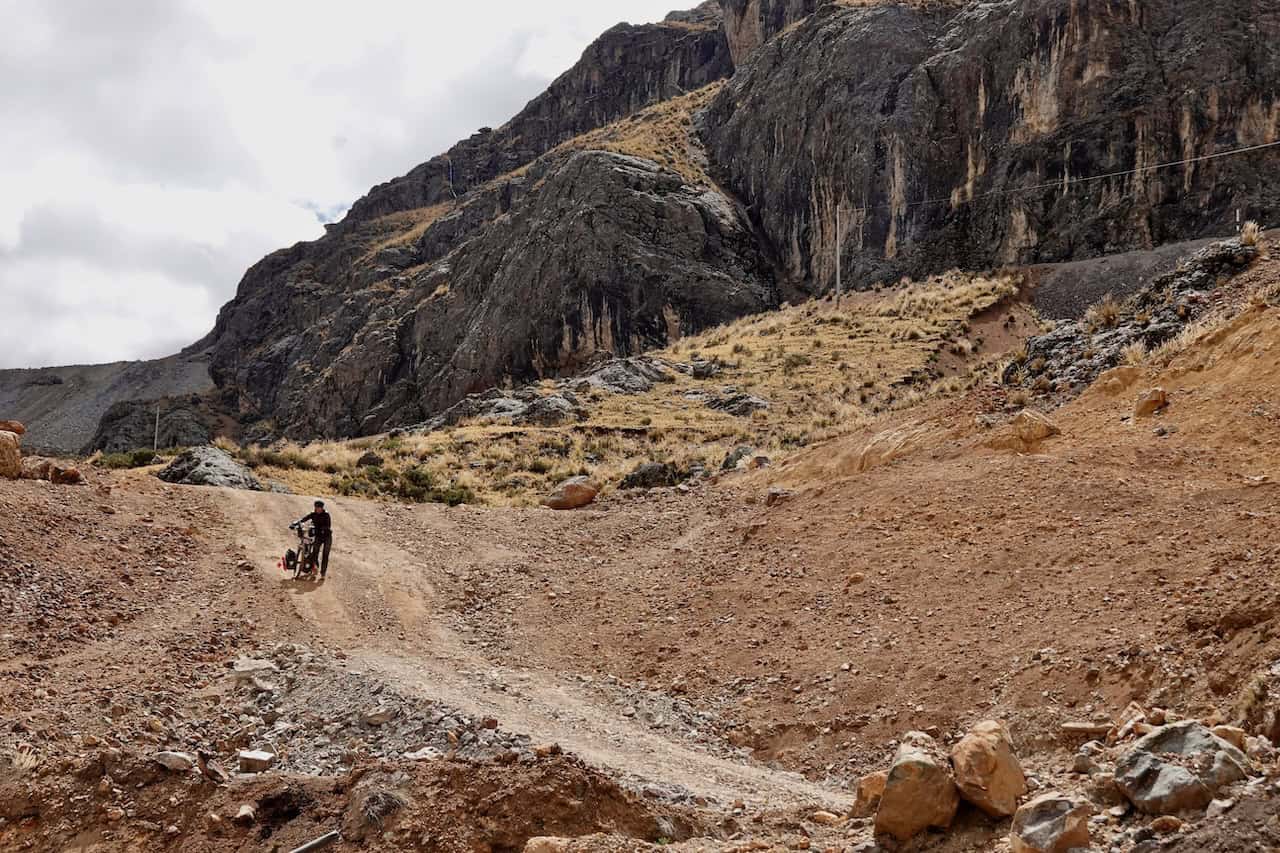
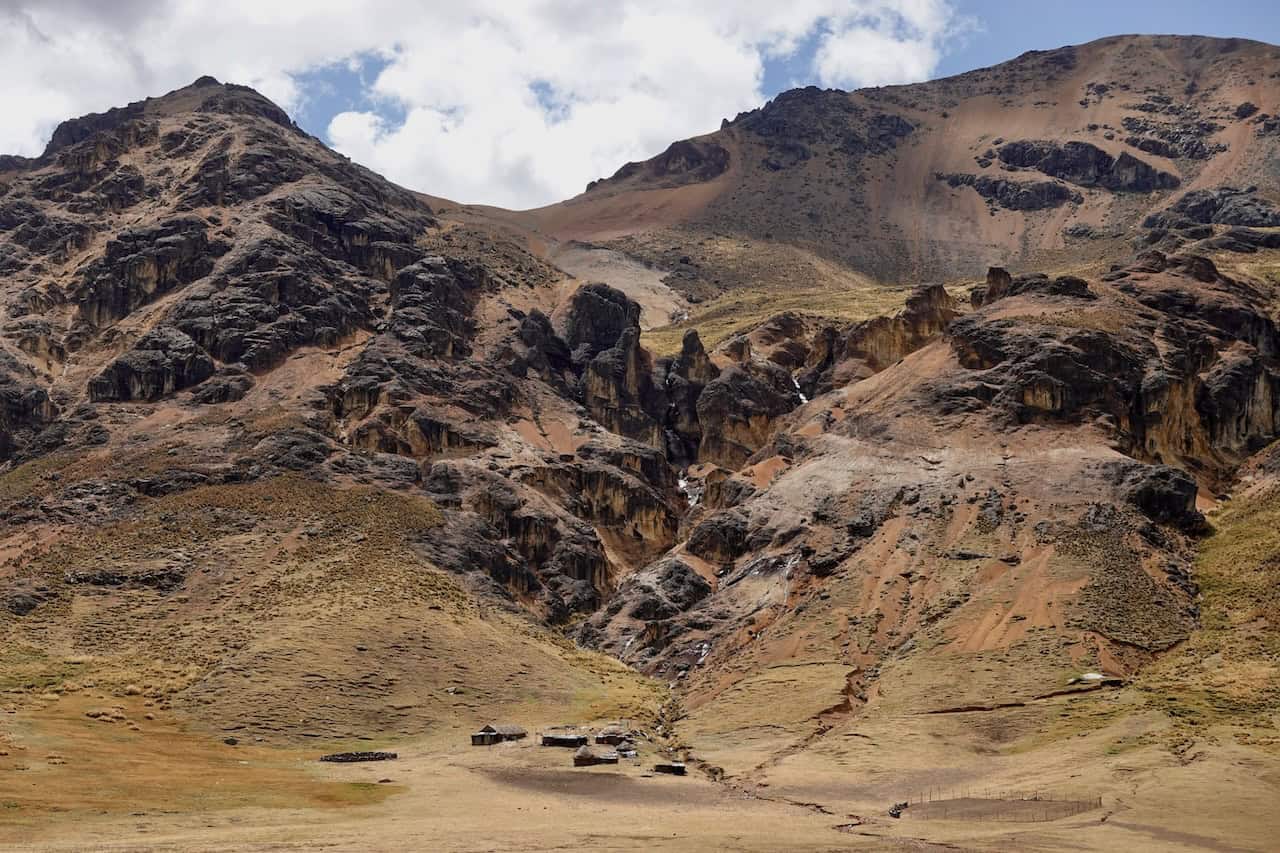
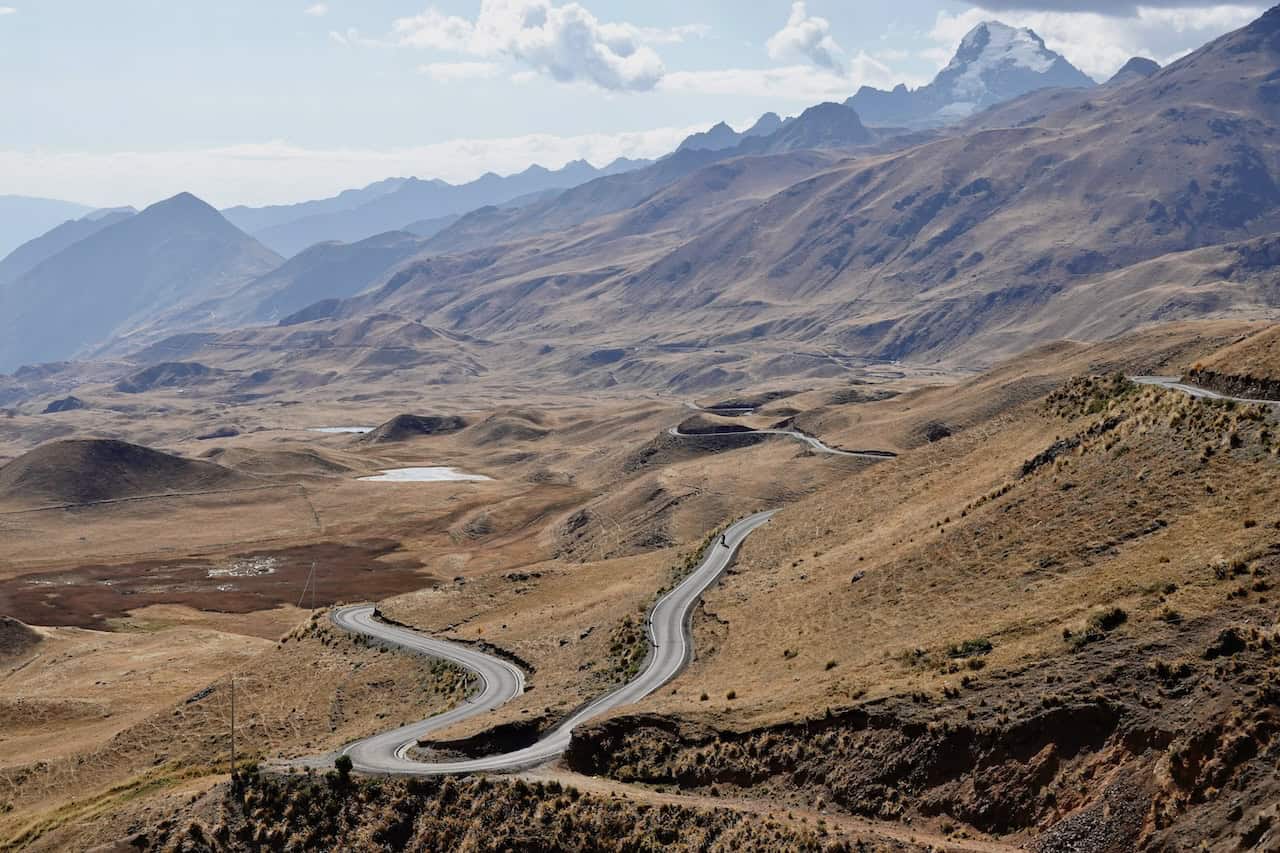
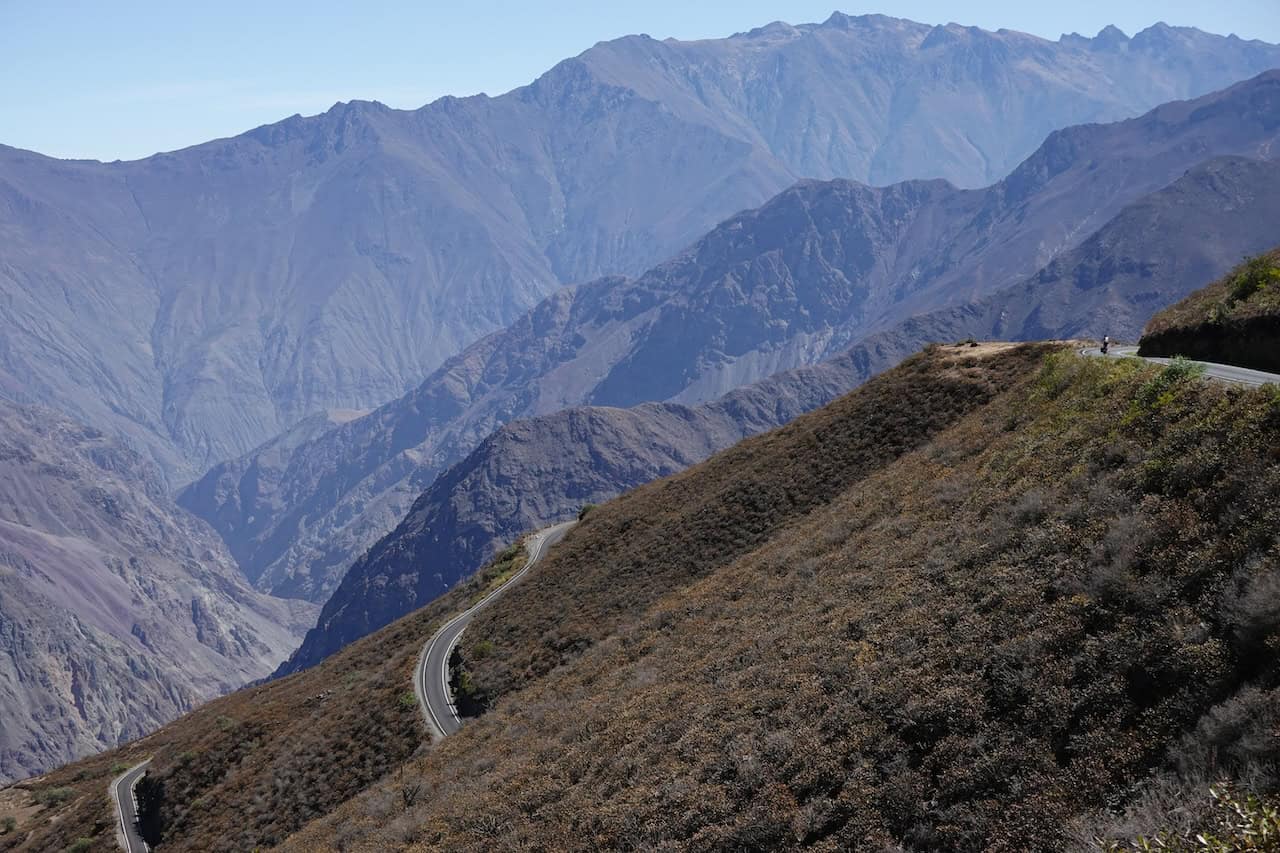
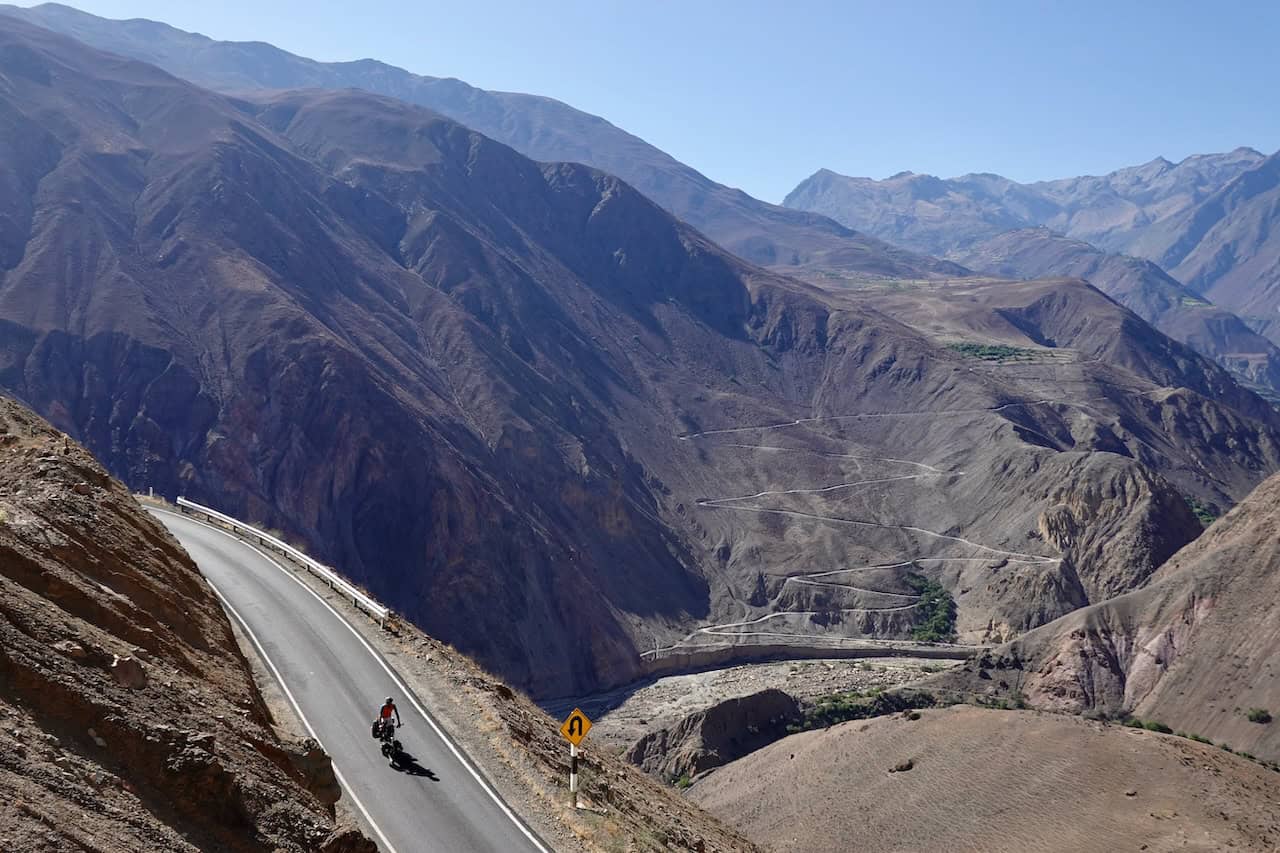
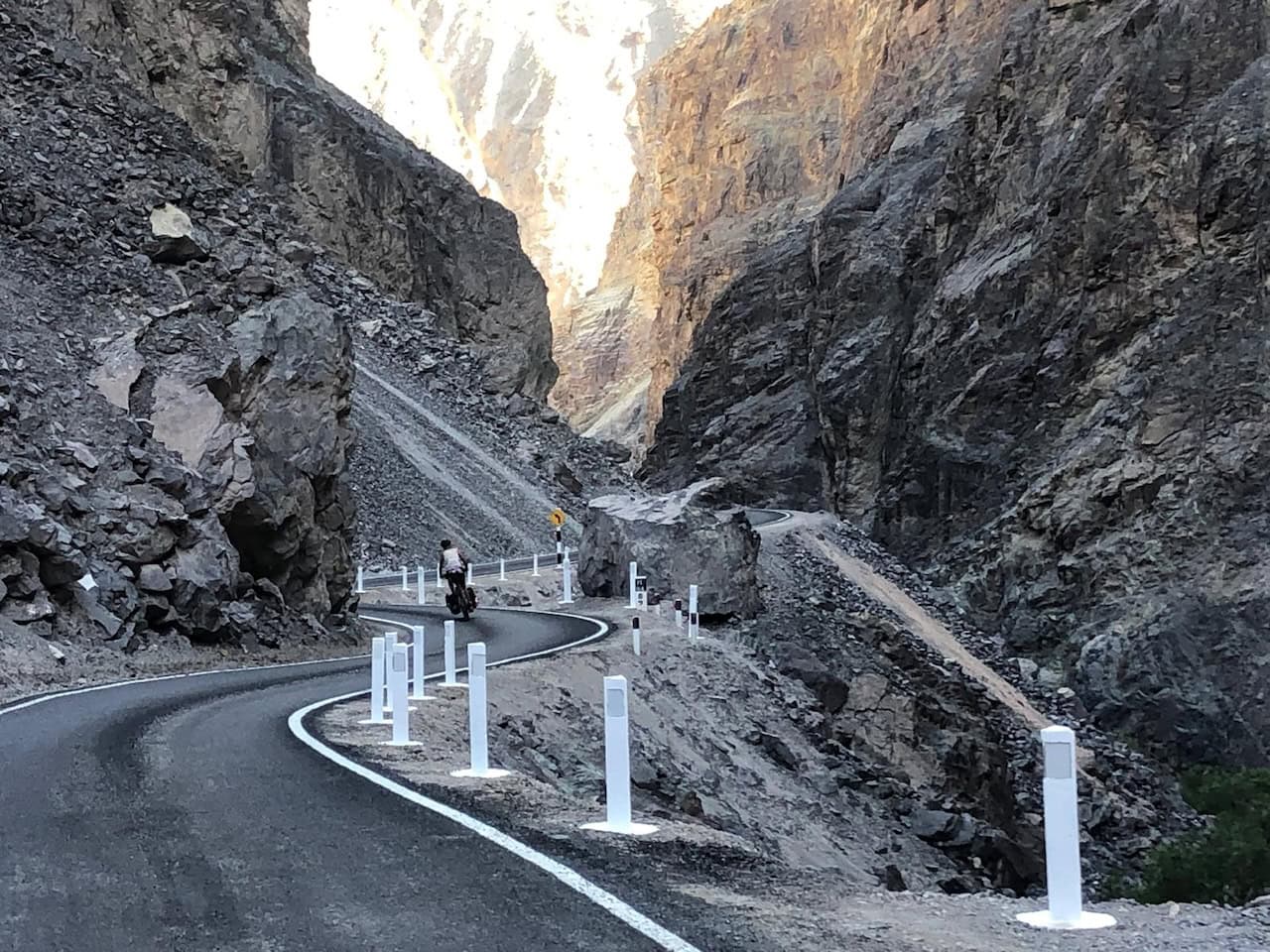
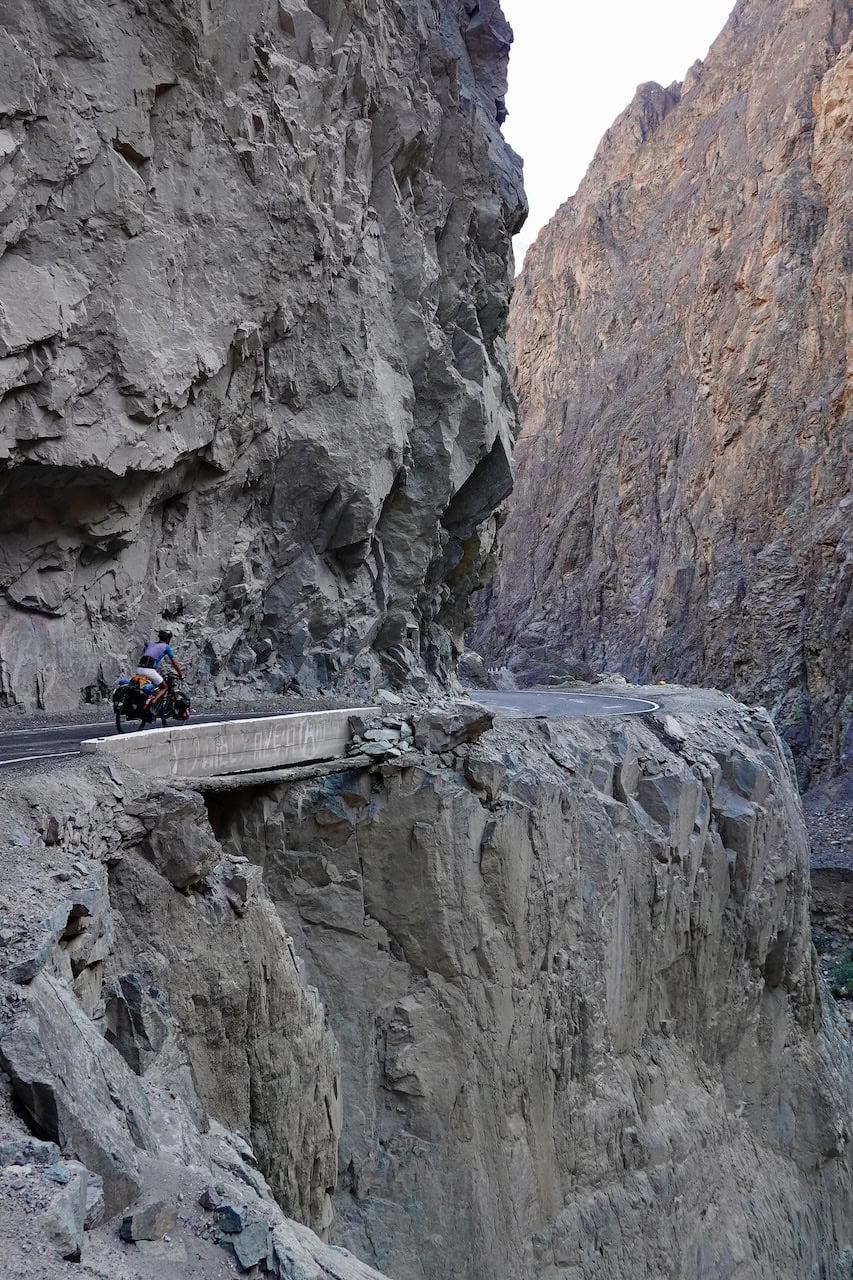
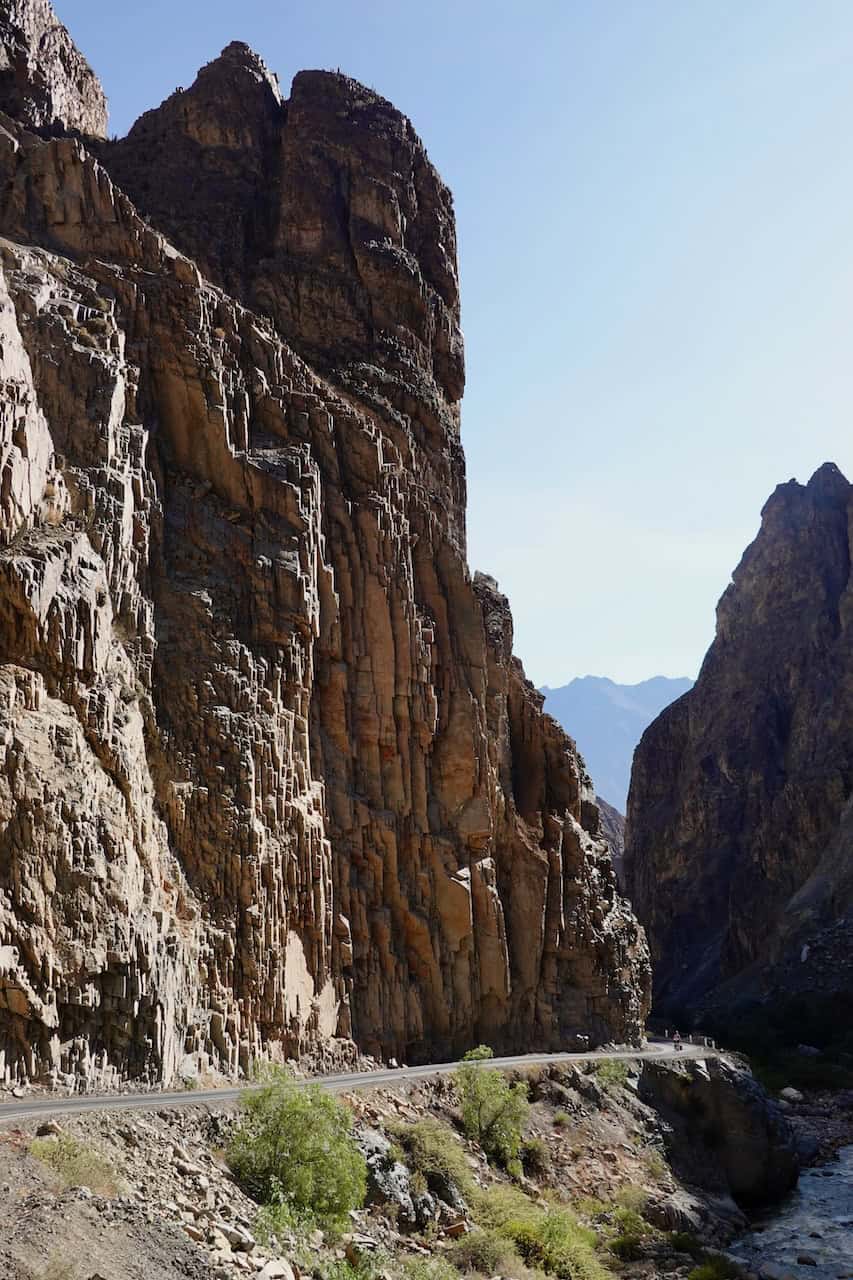
We camp by the river, at the lowest point of our route through Peru (excluding the end point Lima), about 1300 meters. At this altitude it is warm and for the first time in a long time we fall victim to bloodthirsty mosquitoes and flies. The next day we climb, bathed in sweat, 1500 meters in one go to the next village, Llipa. On the square there are several people sitting at a plate of food. The only thing that is served. After a while we also sit down to enjoy a surprisingly tasty meal, called Chocho. This becomes a favorite for both of us and later we also learn what it consists of; lupine beans, raw onion and a little tomato, a pepper, lots of parsley and sometimes a clear juice of lime and boiled trout (called ‘leche de tigre’, tiger’s milk). In addition to this mixture, a handful of salty roasted corn belongs. A delicious combination! We finish with a home-made ‘milk ice cream’ in a long narrow plastic bag.
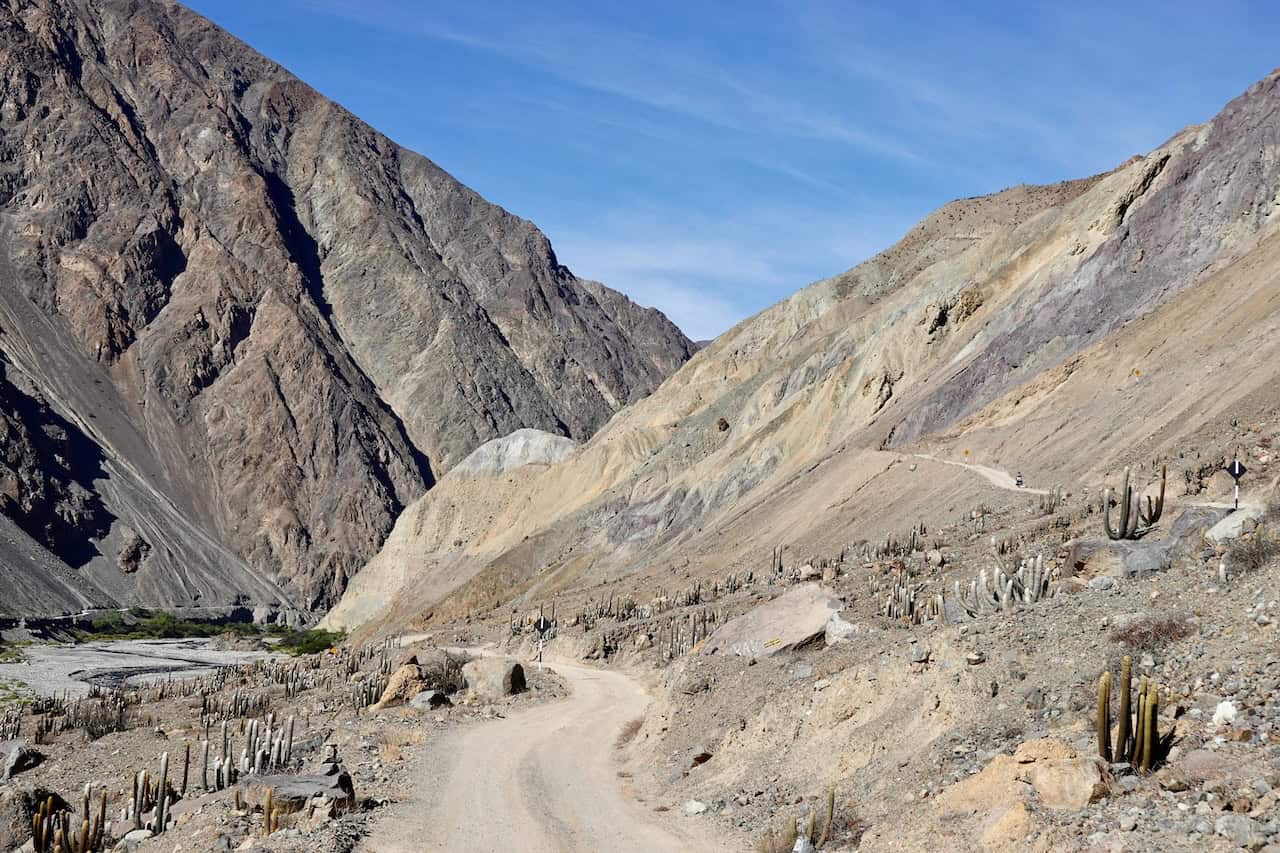
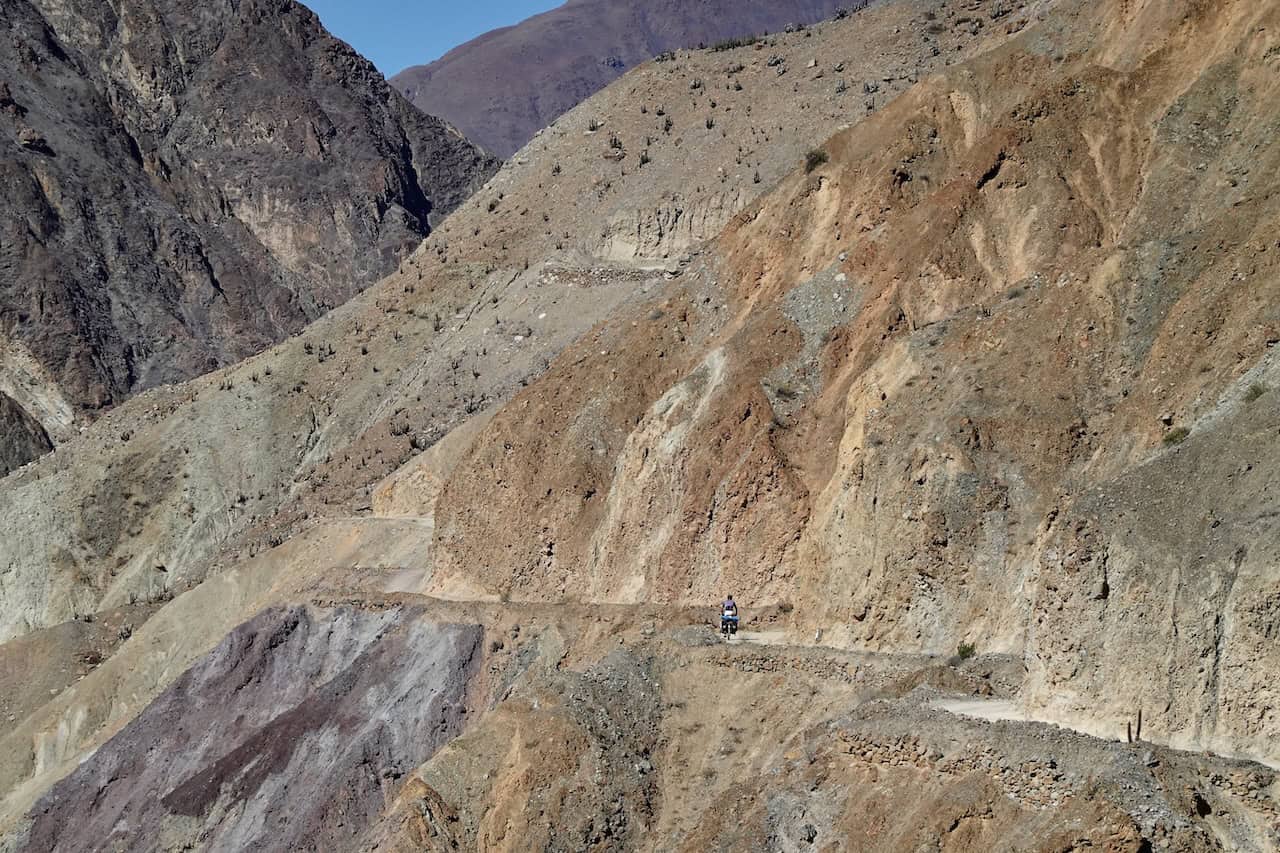
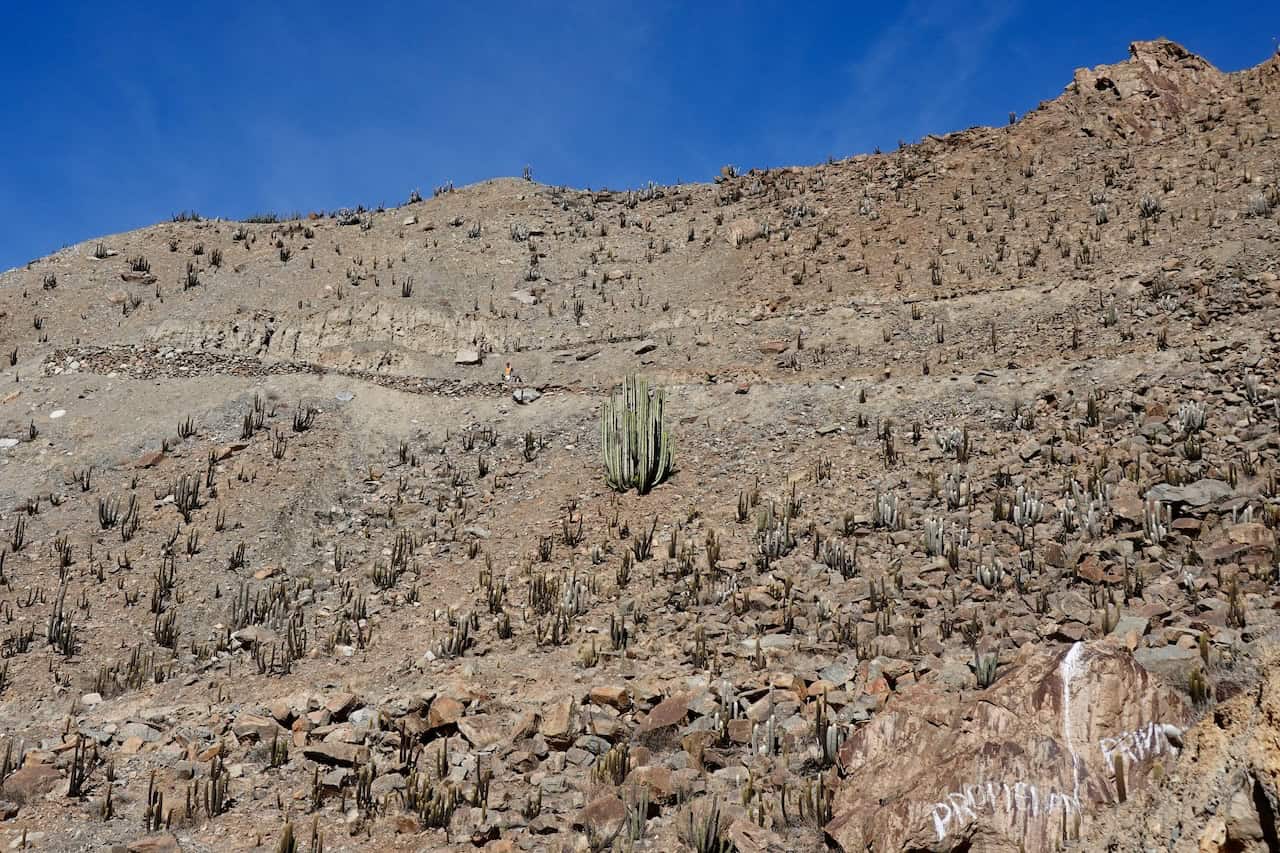
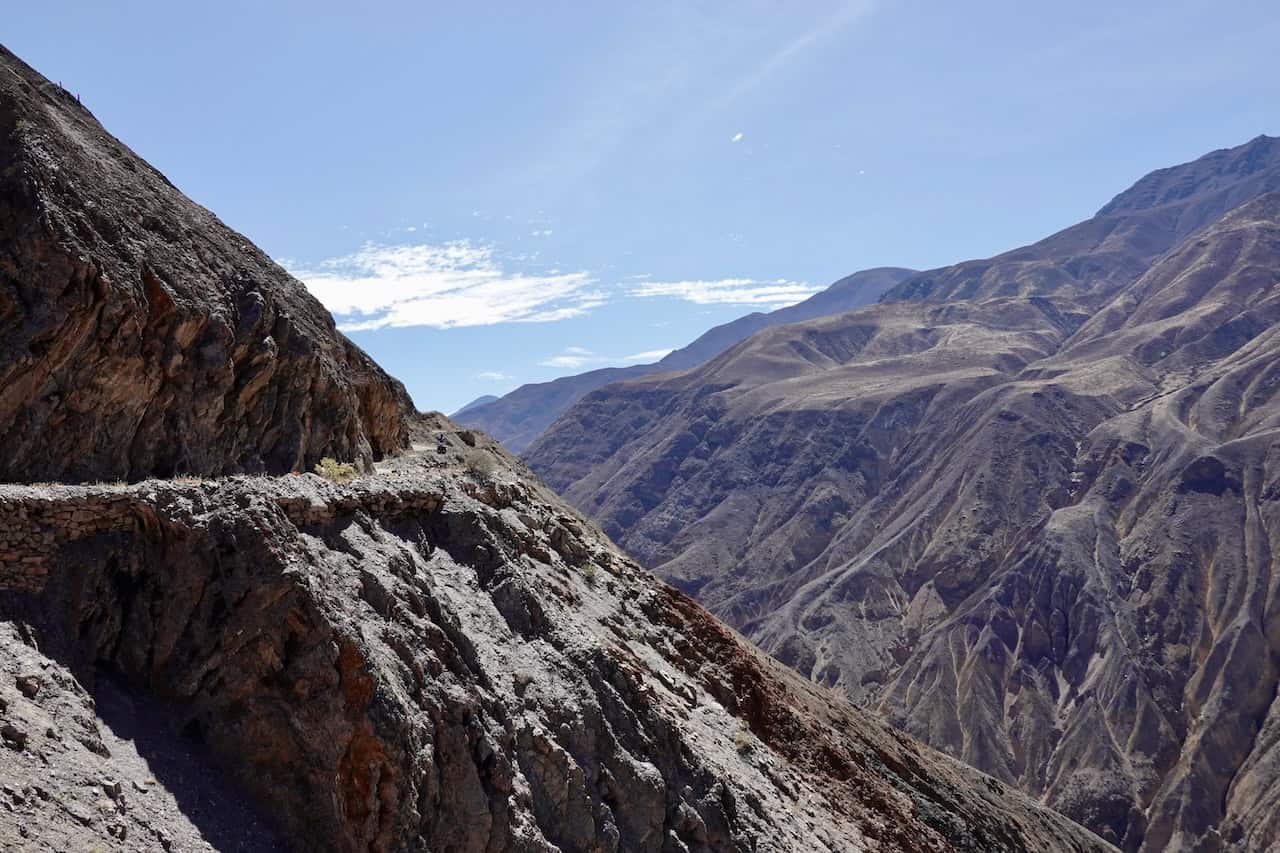
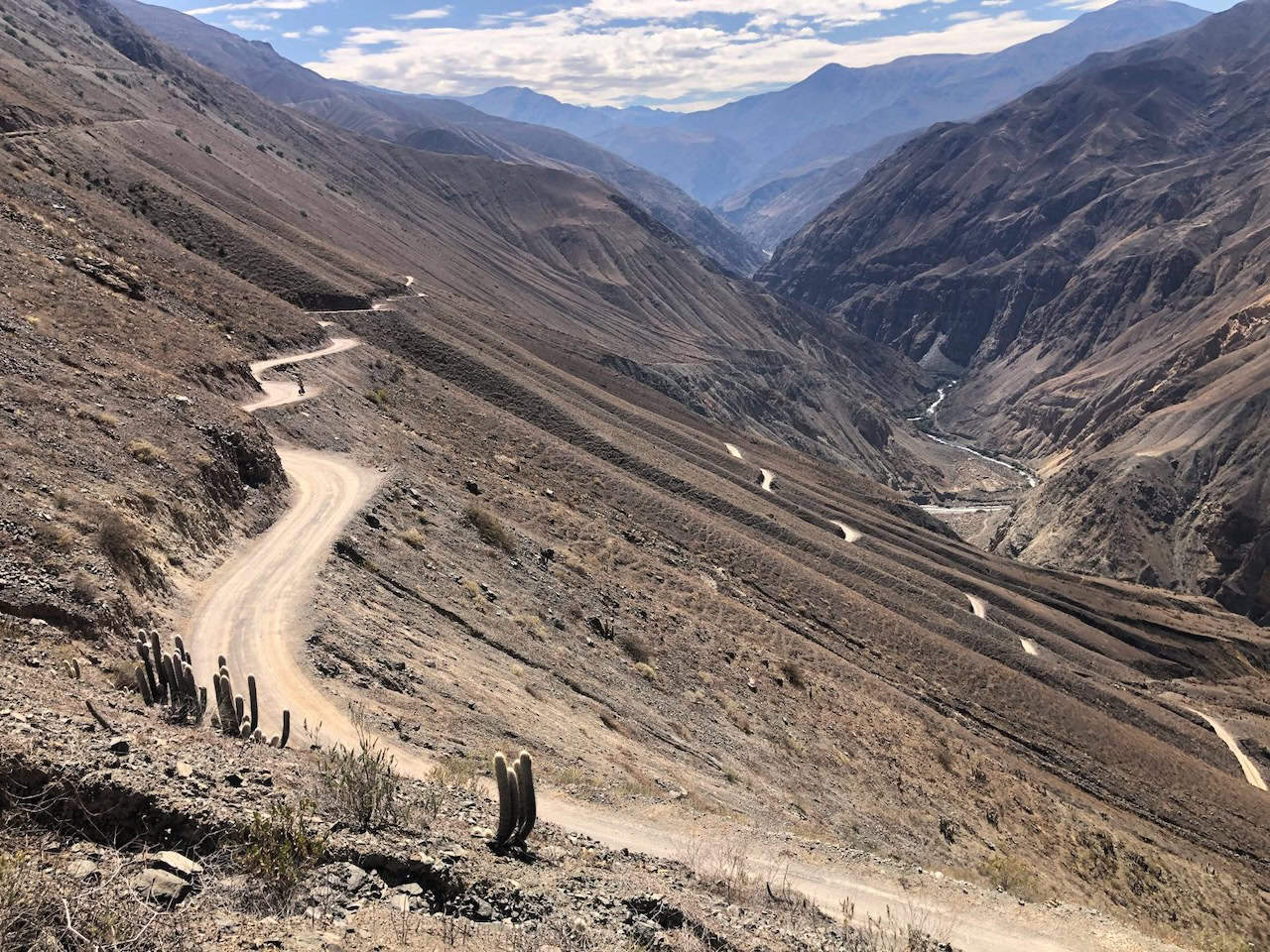
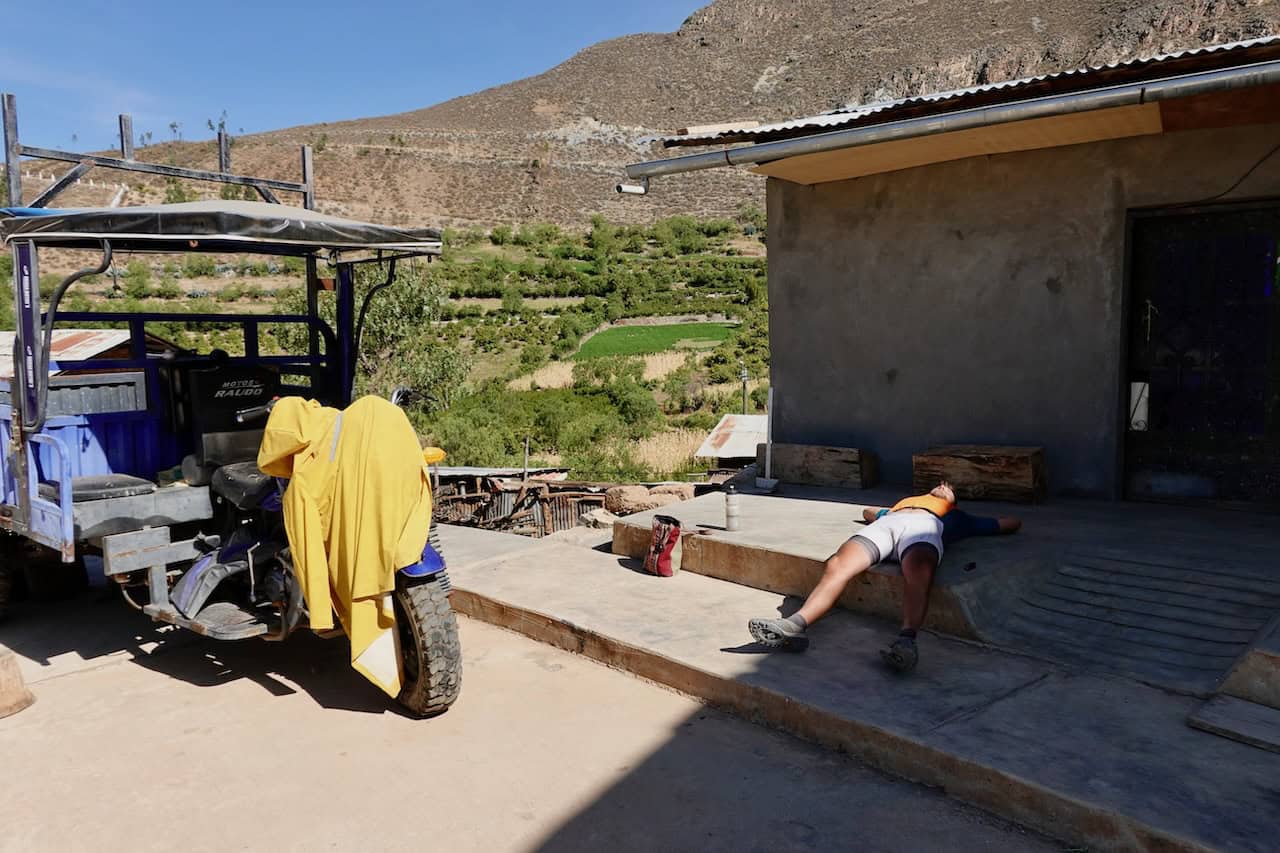
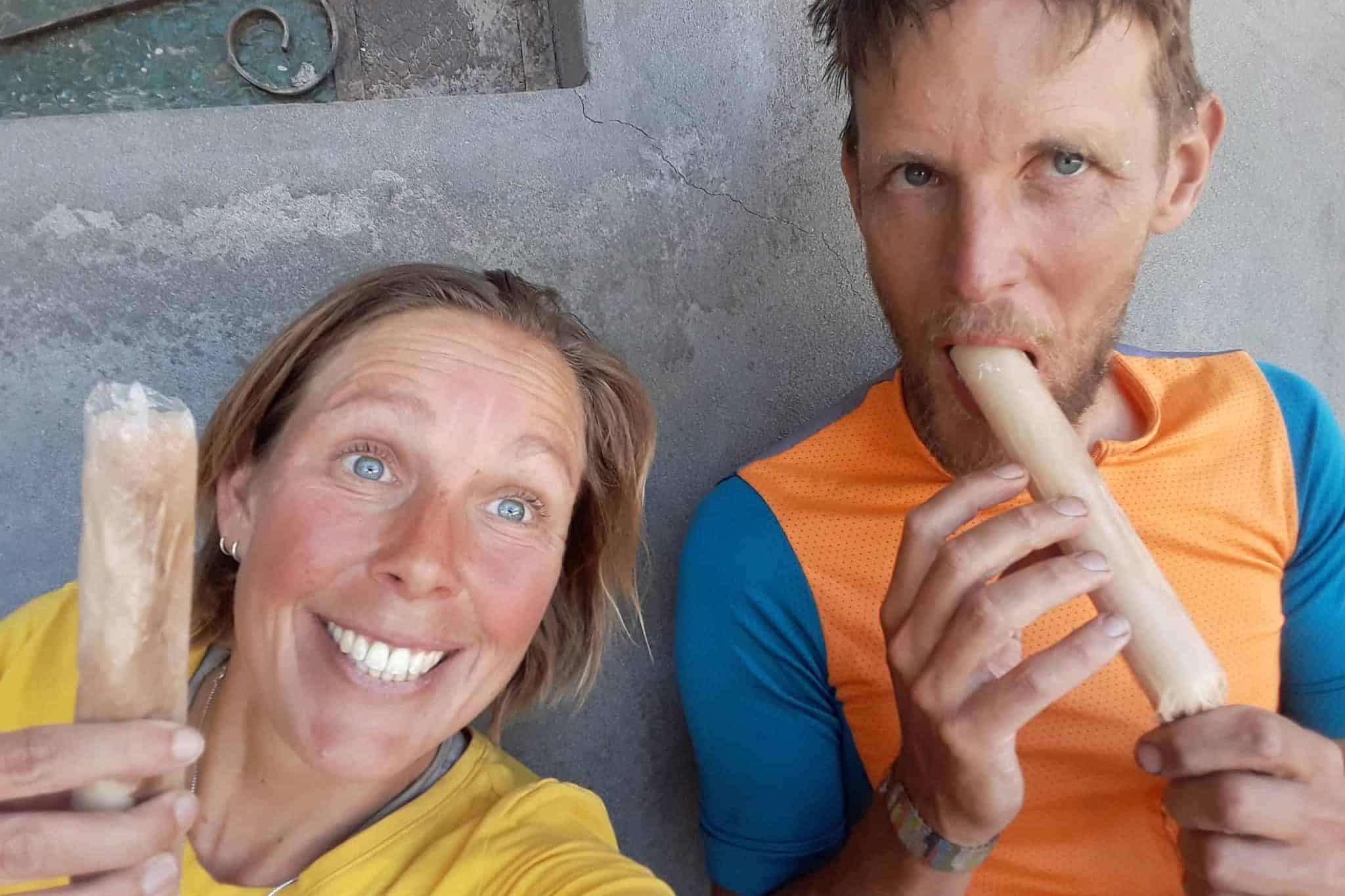
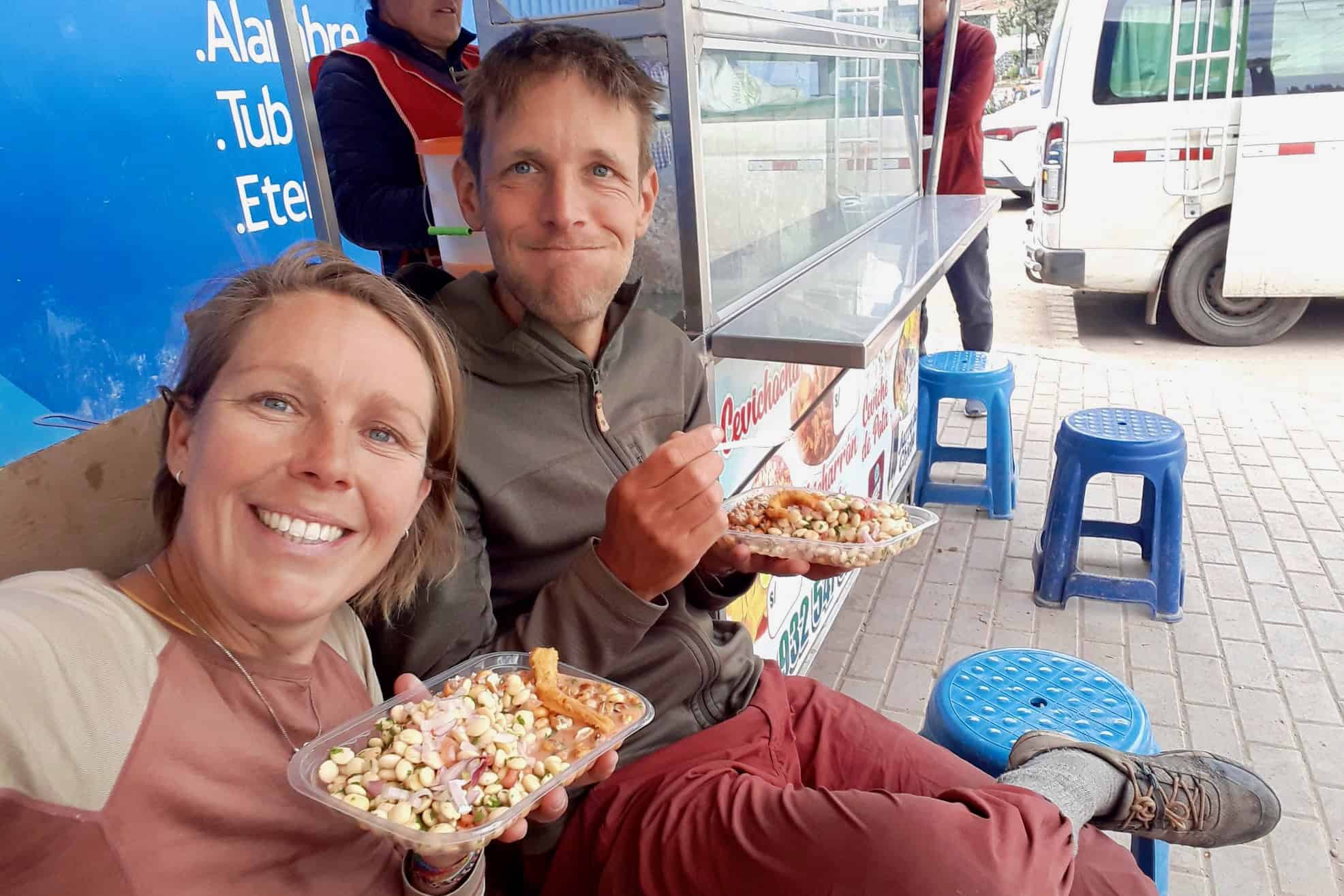

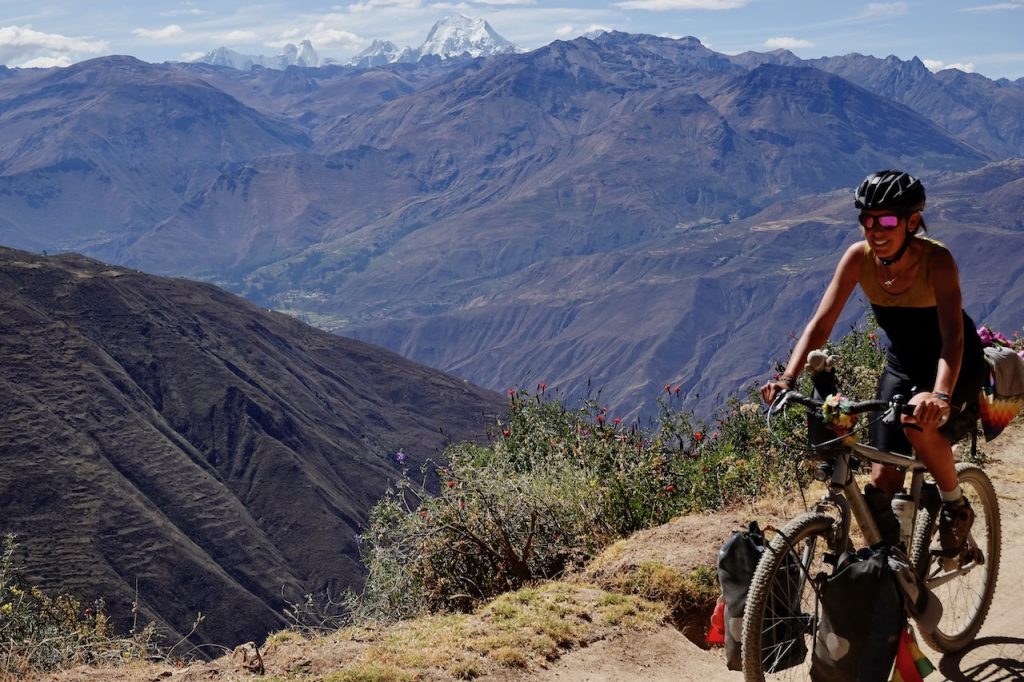
With almost 2000 meters of altitude on the counter we pitch our tent halfway up the 4000m climb with a view of the valley. What an achievement we have achieved today! We are proud of ourselves and each other. How we can climb these days!! All that time at altitude has paid off! Not so strange, because with only about 60% of the oxygen that we are used to taking in at sea level, our body has been transformed into a ‘hemoglobin machine’. That 10% more red blood cells ensures that a higher percentage of oxygen can be transported through our body. If we are then a bit closer to sea level (here at 1300 meters at the start of the climb) then we might notice the advantage. Our blood has become TUBRO blood!
The next day (now quite high again) a tough(er) part follows. The road is also much worse, strewn with lots of loose rocks and stones. In a small dip in the route, where you can pick up speed for a moment, Paul lands with his front wheel on a sharp stone and with a bang his tire is flat and there is a dent in his rim. He is very annoyed. This is the end of the tubeless experiment for this trip. While he digs an inner tube out of the bag, I clean the anti-puncture gunk out of the tire. It was quite a discovery, riding tubeless. I remove about 8 skewers from the outer tire that would have caused 8 punctures had there been an inner tube. Two skewers are legendary big!

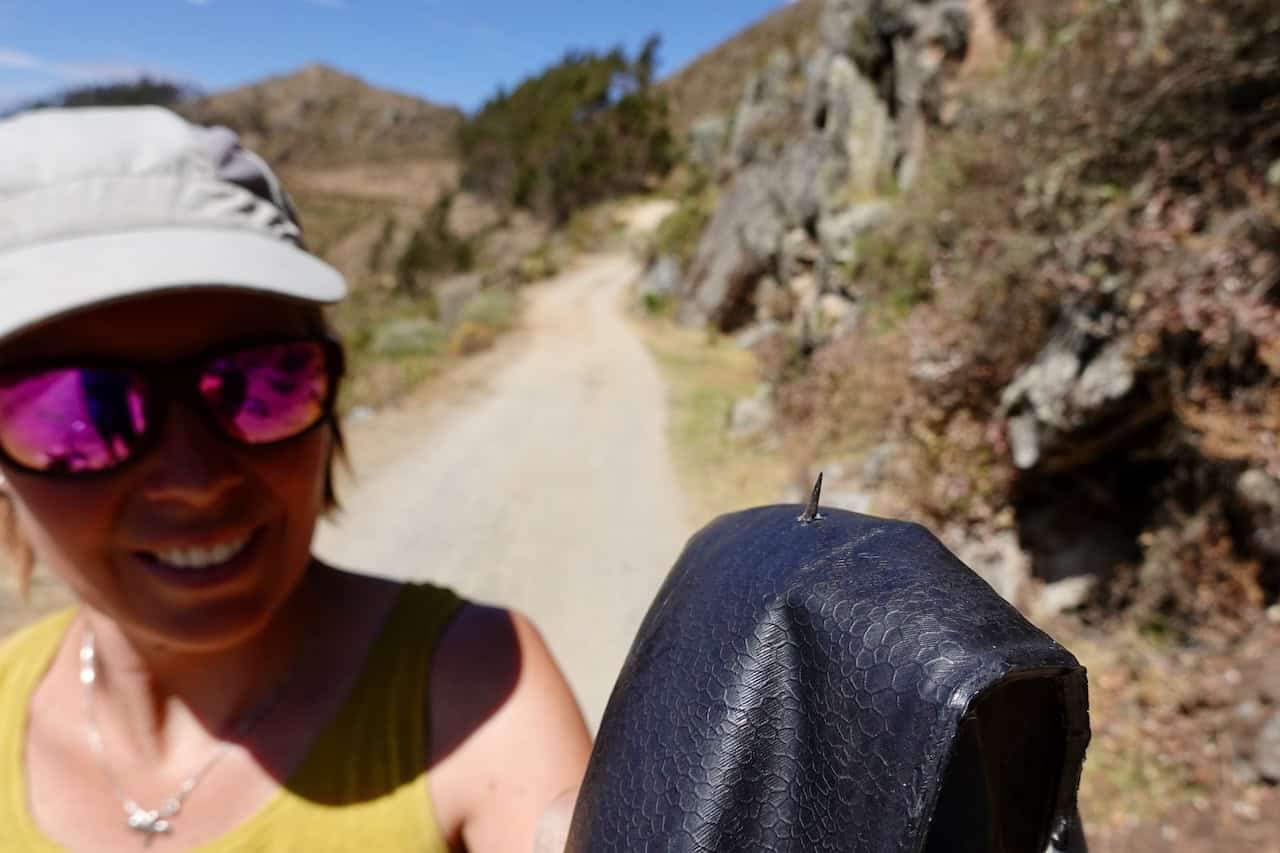
A little later I am the unlucky one, not at full speed but rather at a snail’s pace, braving the cobblestones and gravel on a steep climb. My rear wheel slips from under me and I can’t unclip (from my pedals) in time. So, almost at a standstill, I fall to the side like a doll with my bike still between my legs. I land on my back and let my head bounce gently on the ground, I’m not wearing a helmet for nothing. Fortunately, it doesn’t cost me more than a few small scratches, a few bruises and a very deep sigh. Paul gives me a big kiss, tells me how proud he is of me and I get back on with a smile. We are both happy when our tires touch the asphalt and we are free from the bumping, struggling and shocking for a while.

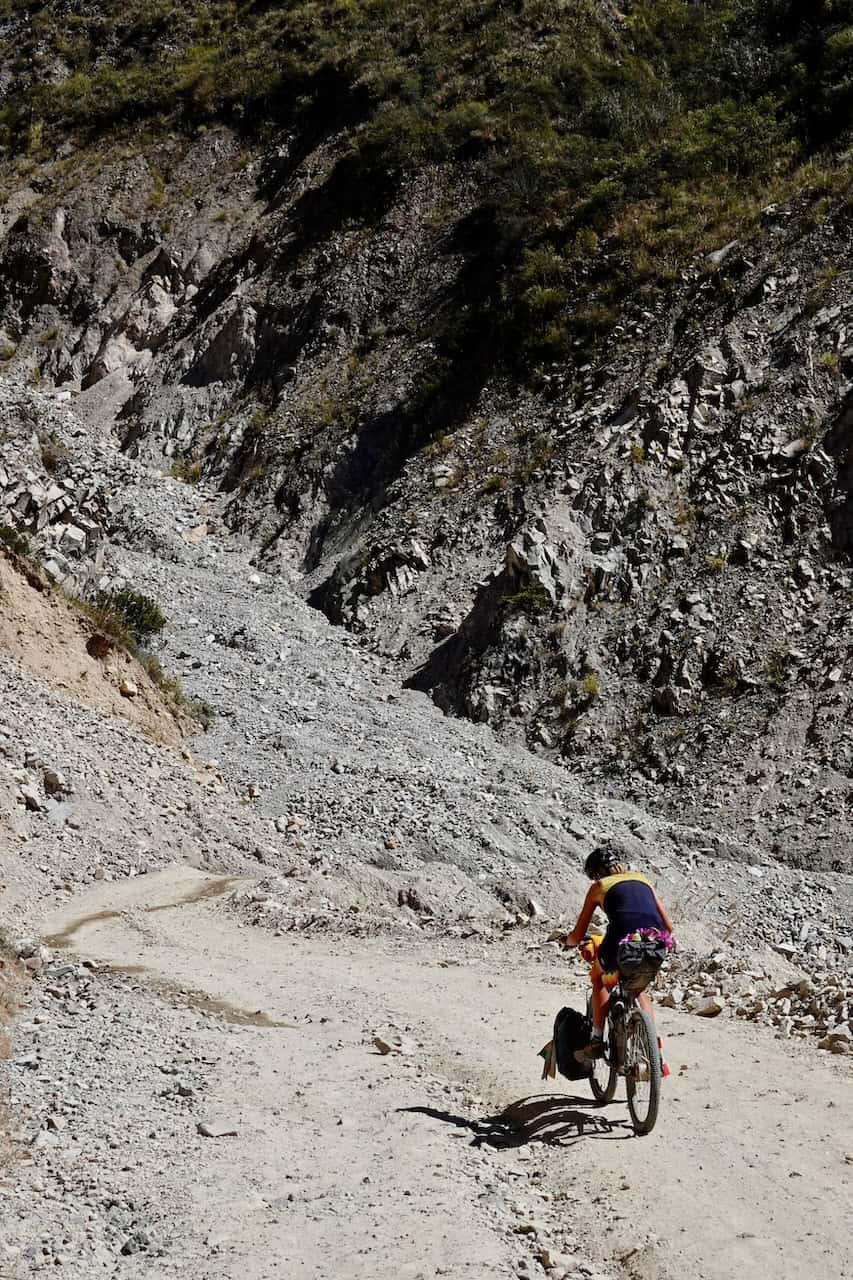
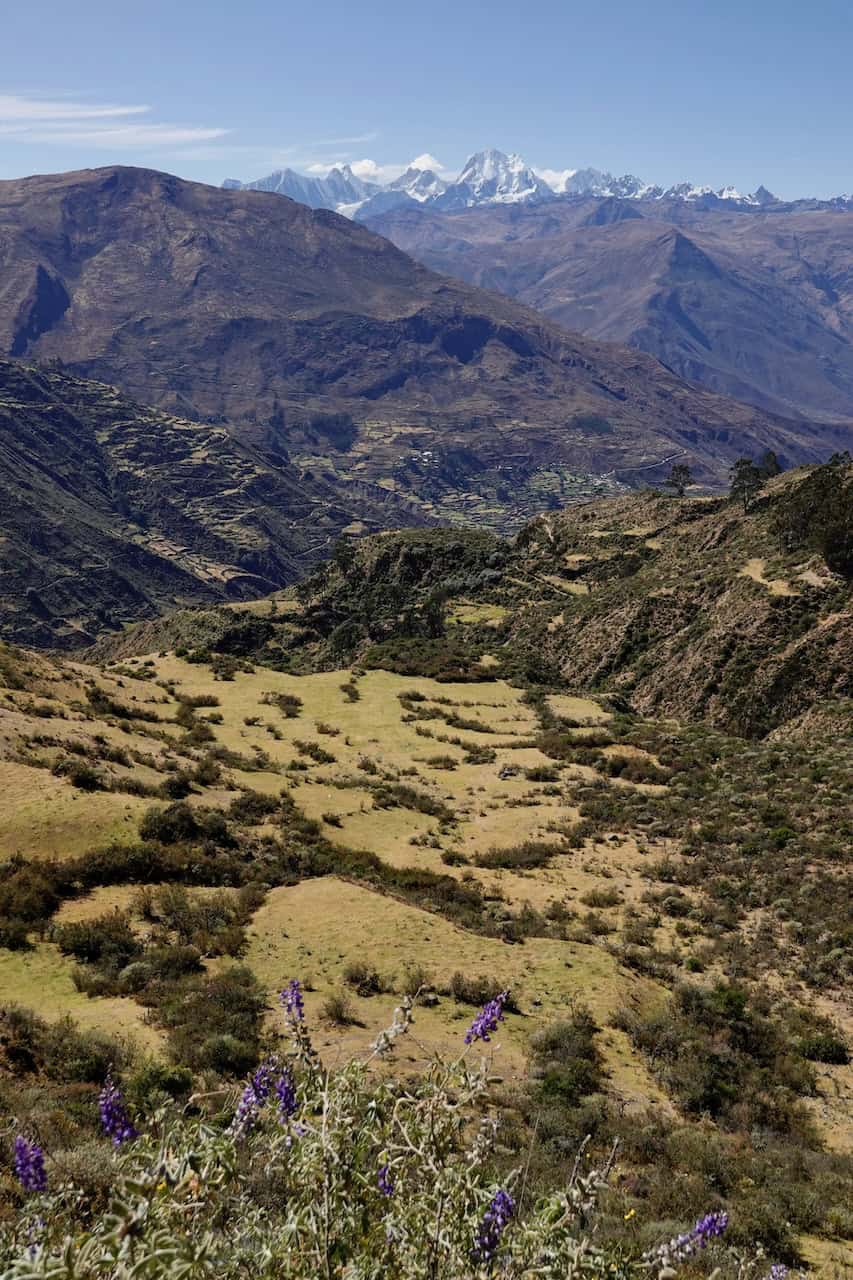
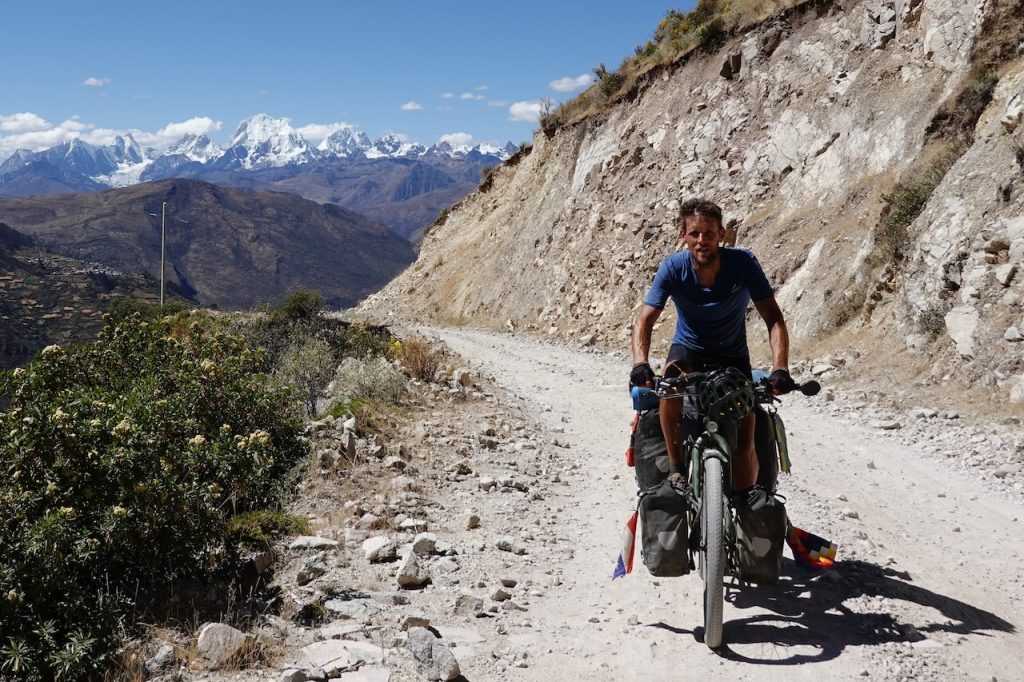
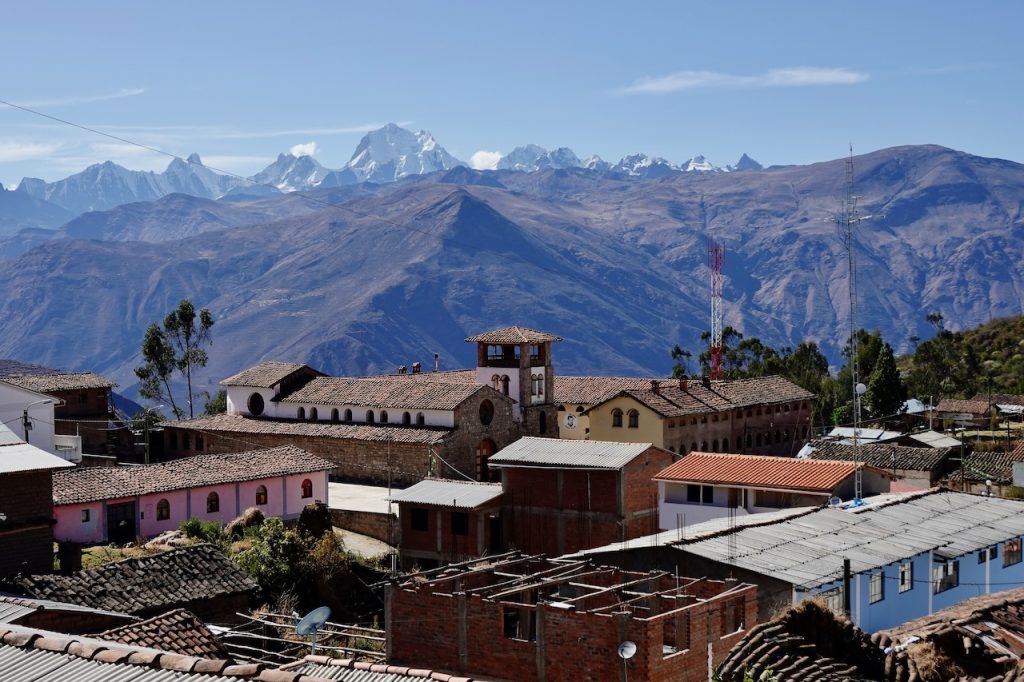
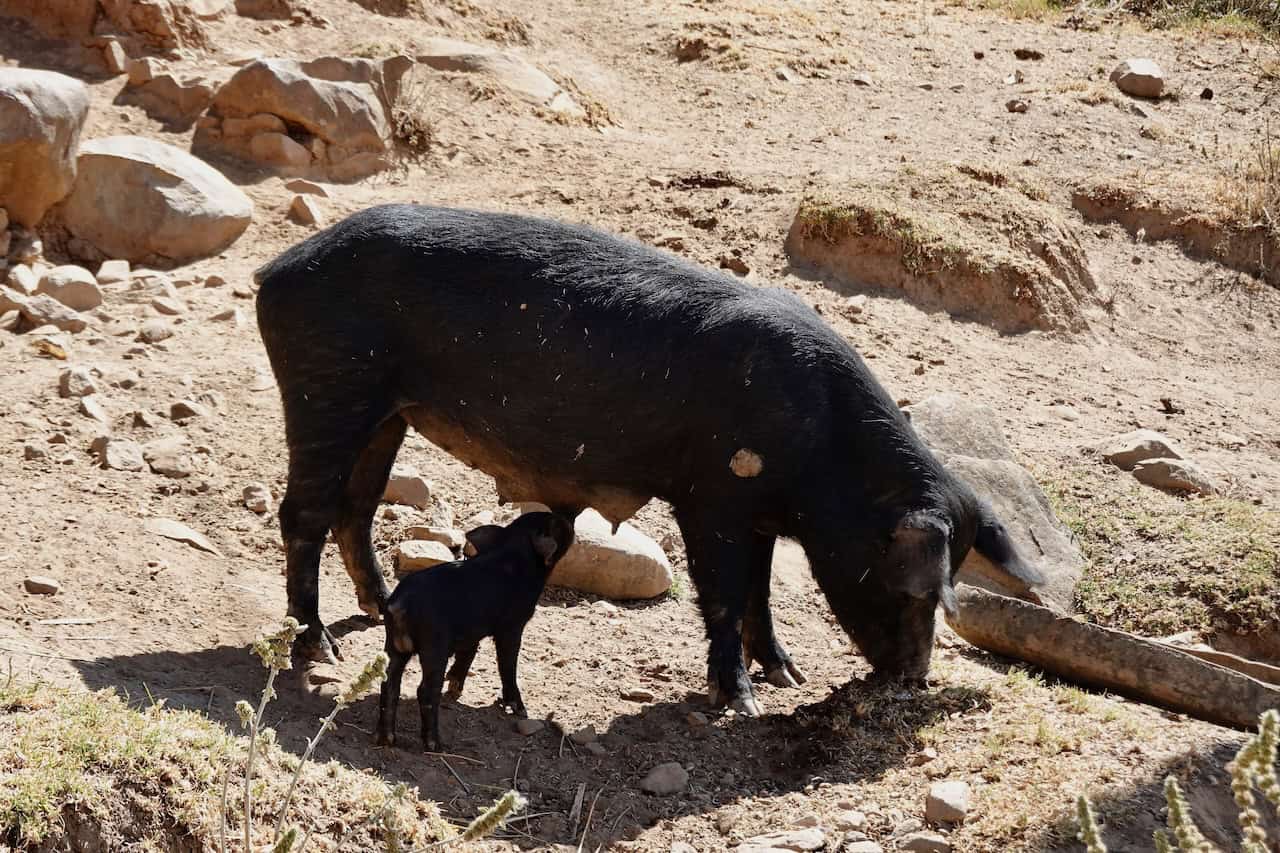
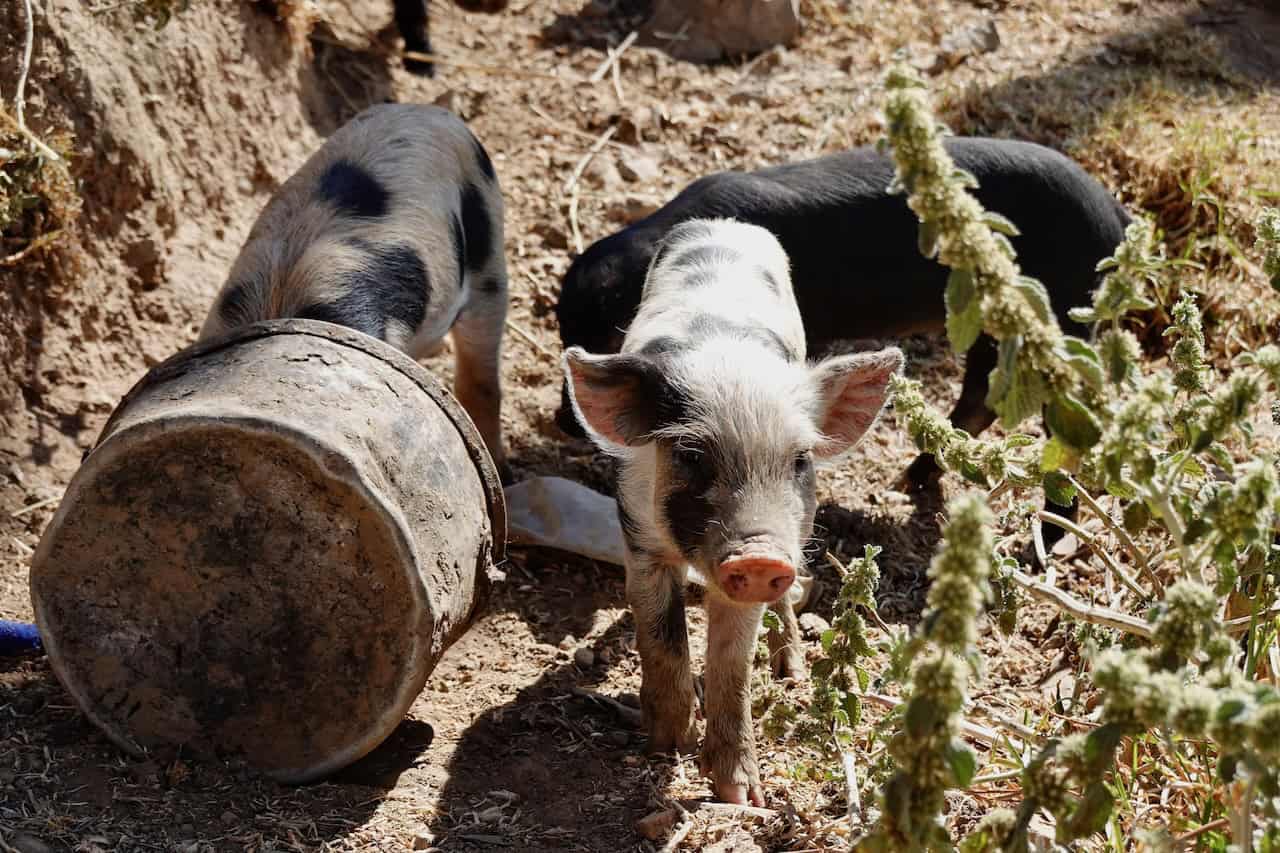
We roll into the ‘village’ of Conococha, which is actually nothing more than a series of cheese and bread shops and a few restaurants. After a late lunch we turn east to make a trip around and to the Pastoruri glacier. Both of us have little juice but a lot of porridge in our legs and we go looking for a camping spot. We find it on top of a hill that gives us a view of a beautiful valley as well as, on the other side, a large glacier. A cat wash has to suffice, the wind feels icy cold on my body after every wipe with the wet cleaning cloth. We make a hot water bottle from my liter bottle and prepare hot tea in the thermos. Seated in our sleeping bags we spread sandwiches with (perfectly ripe) avocado, fresh cheese from Conococha and tomato. While peeing before going to bed I look out over the various illuminated villages in the valley. In the tent it is now pleasantly ‘warm’. No Gran Pumpush or any other hotel room in the world can compete with this! Outside always wins in the end!
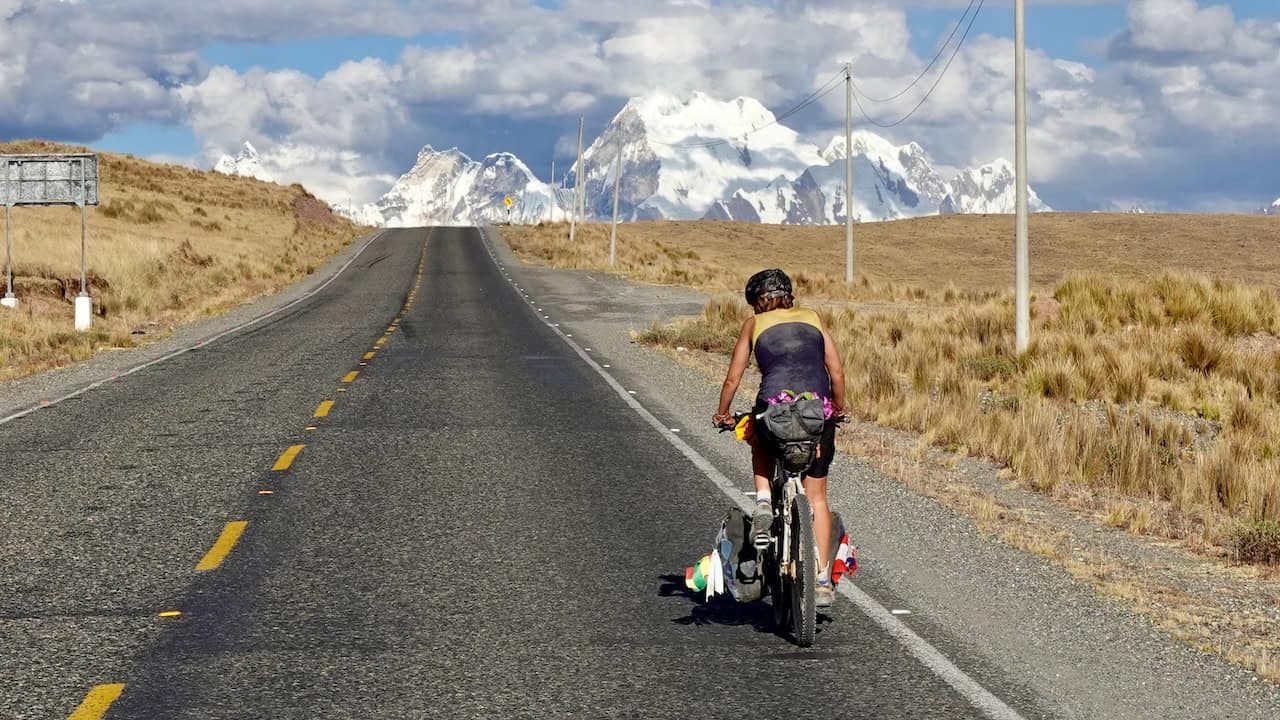

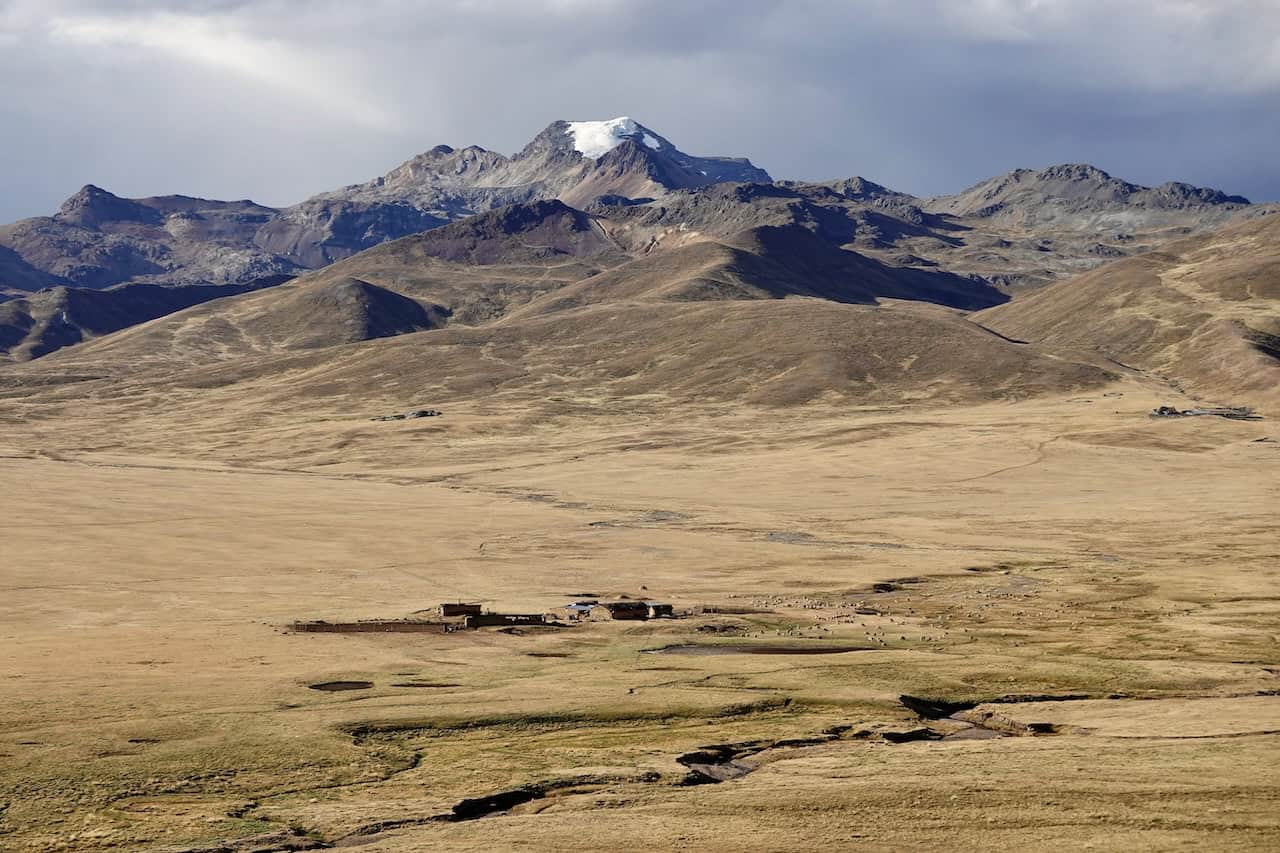
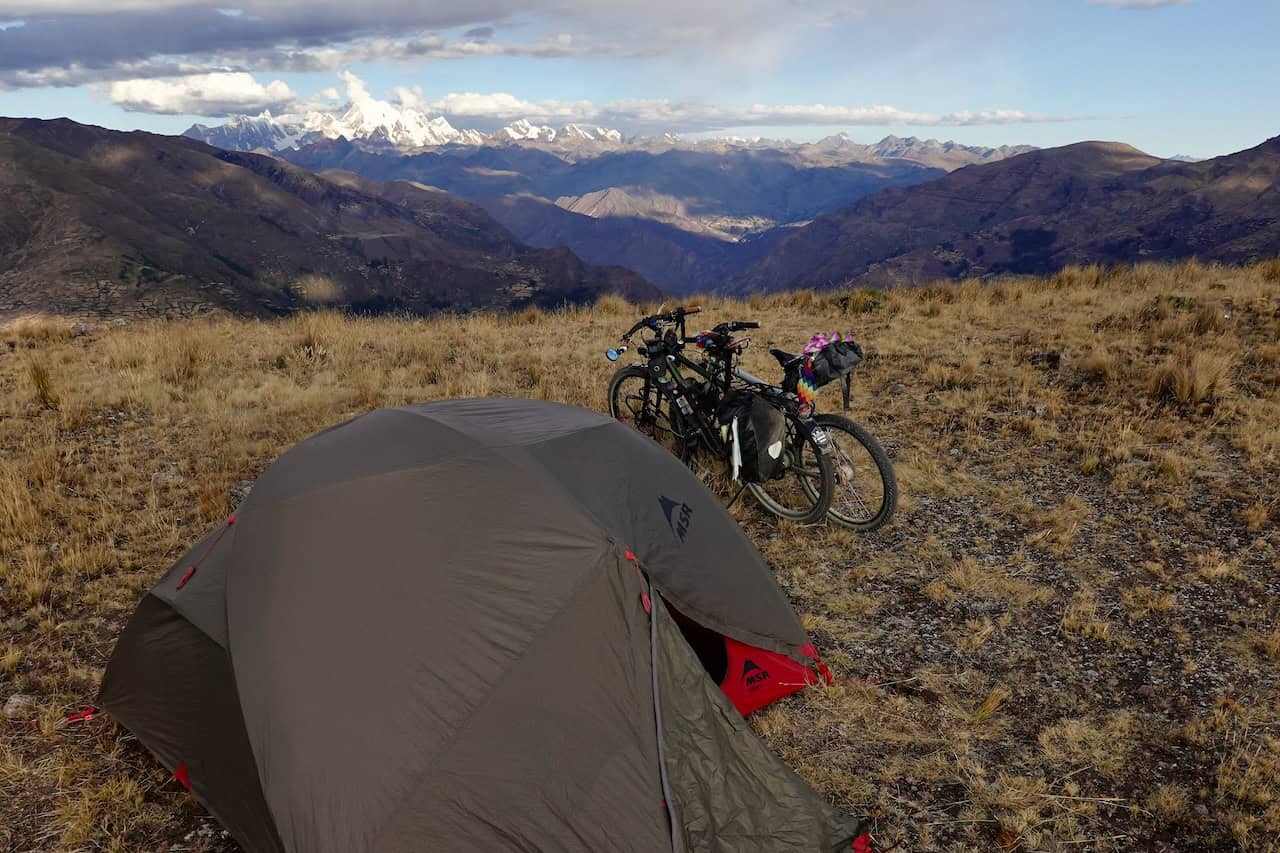

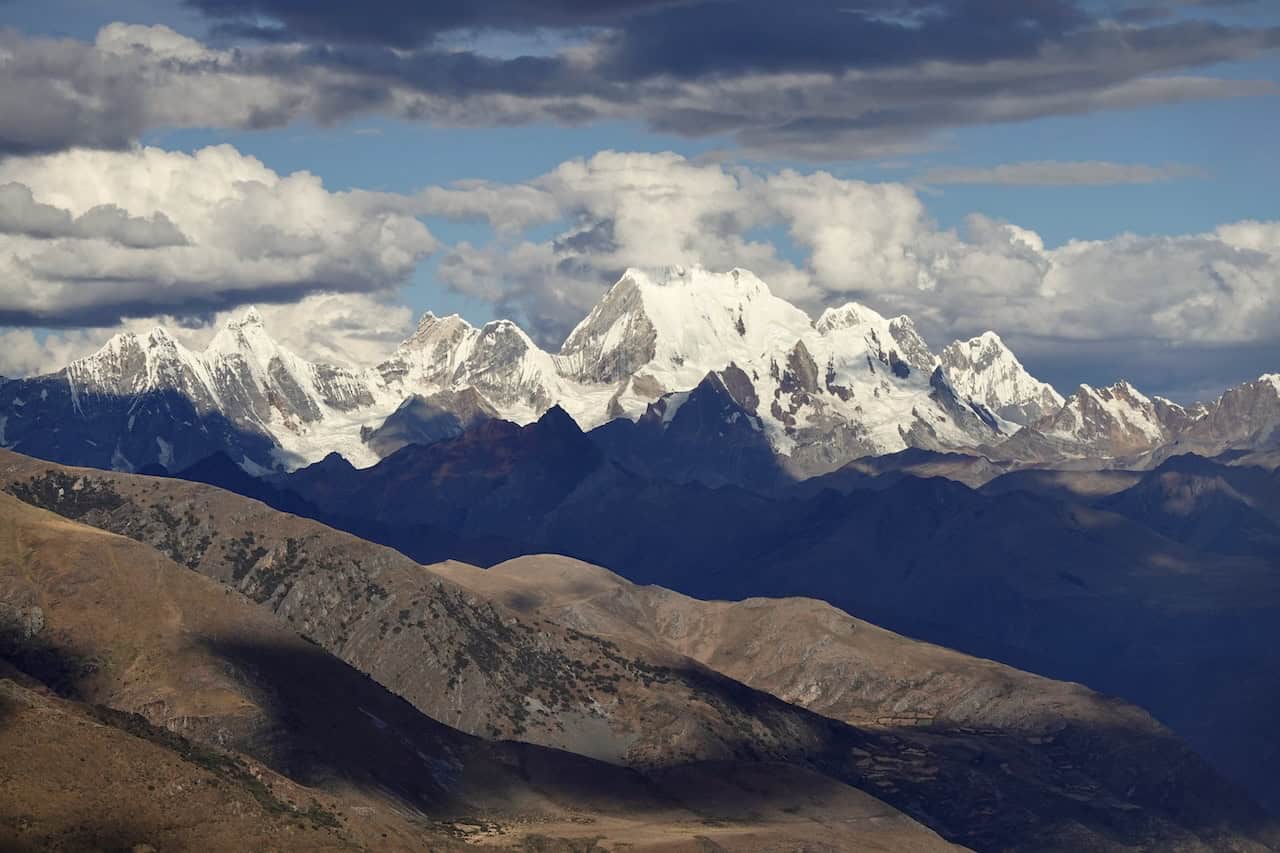

Warm greetings from the Cordillera Blanca, the mountain range you see in the photos above and which we are currently looking out over but will cycle through in the next blog.
Till next time!
